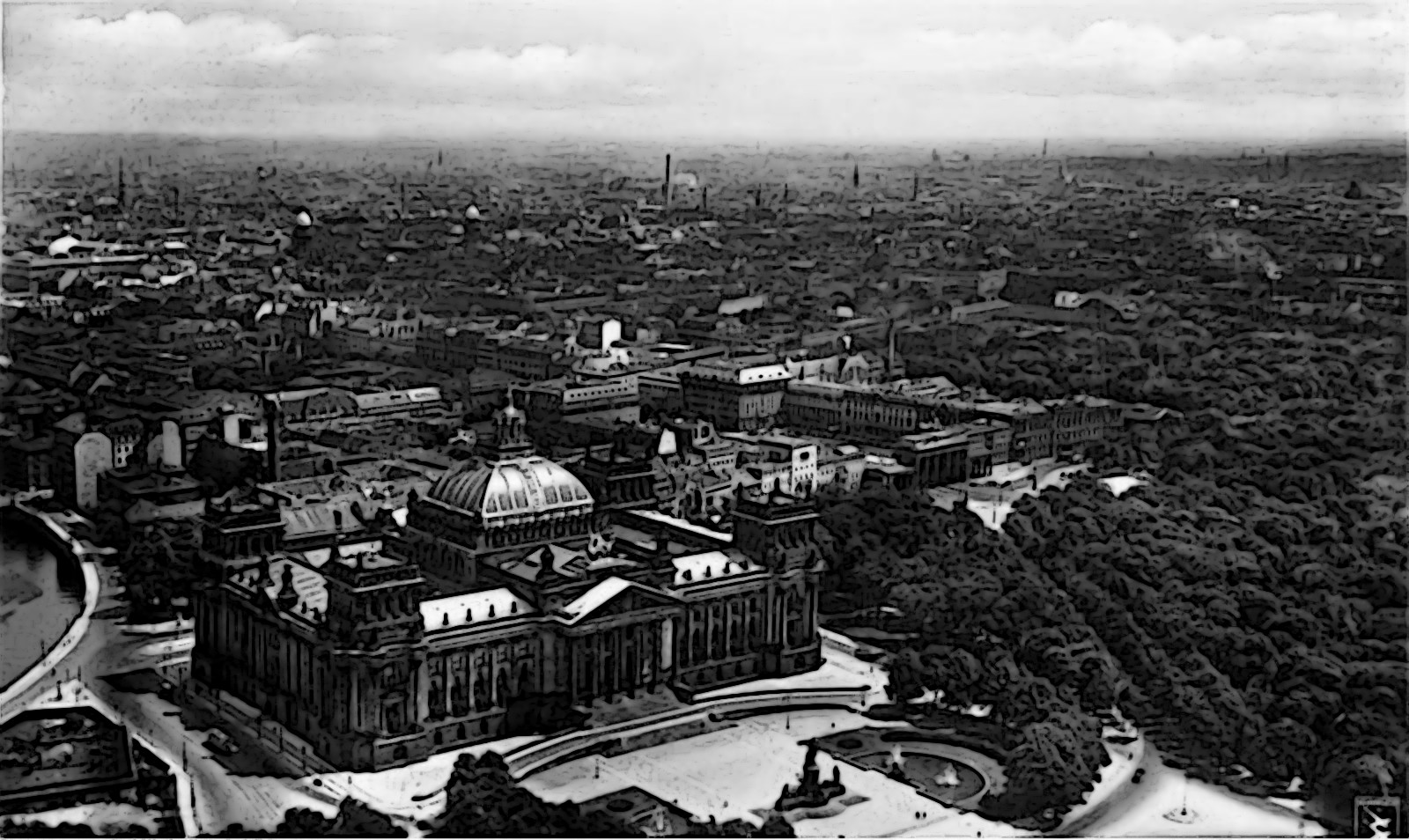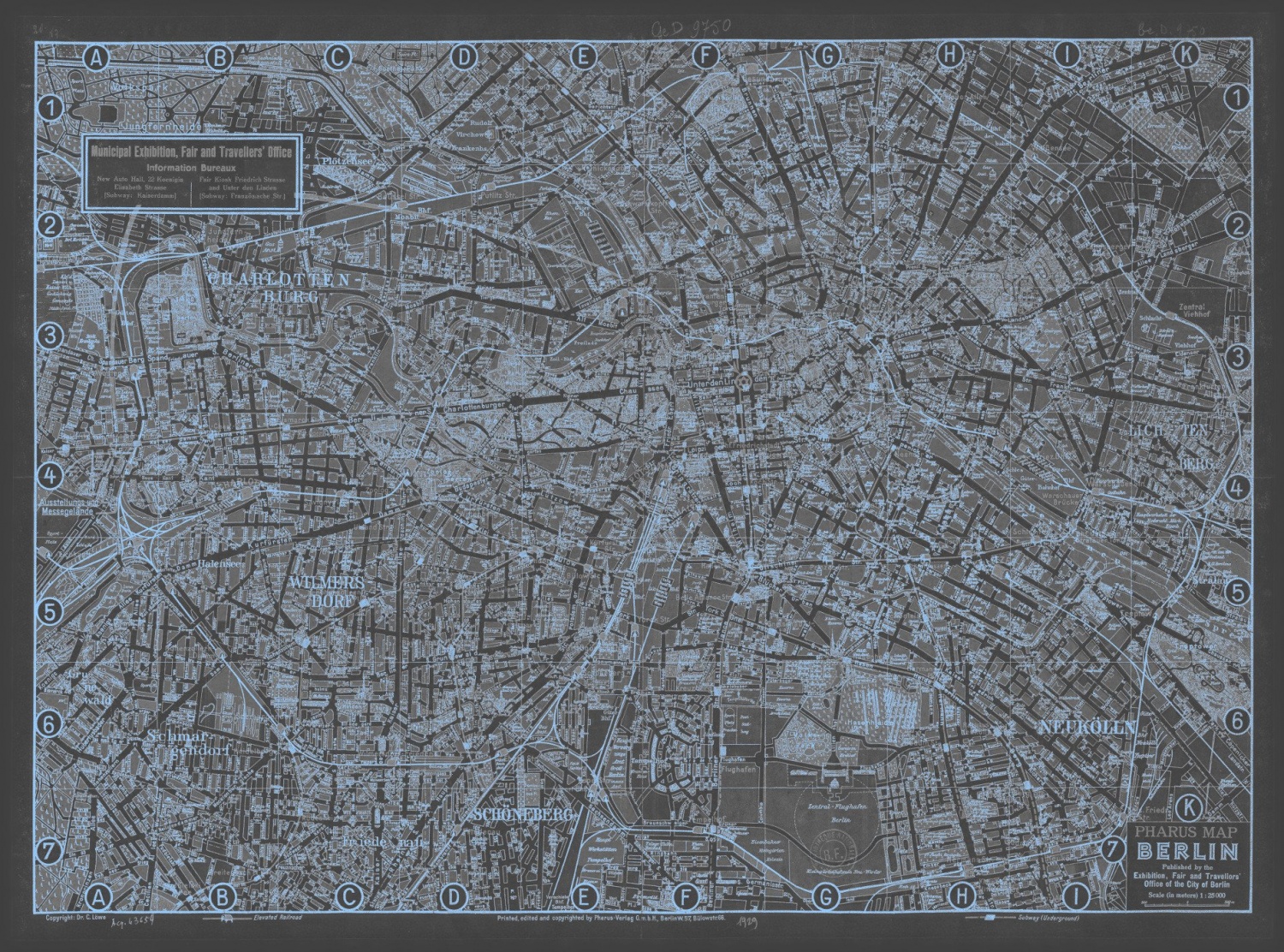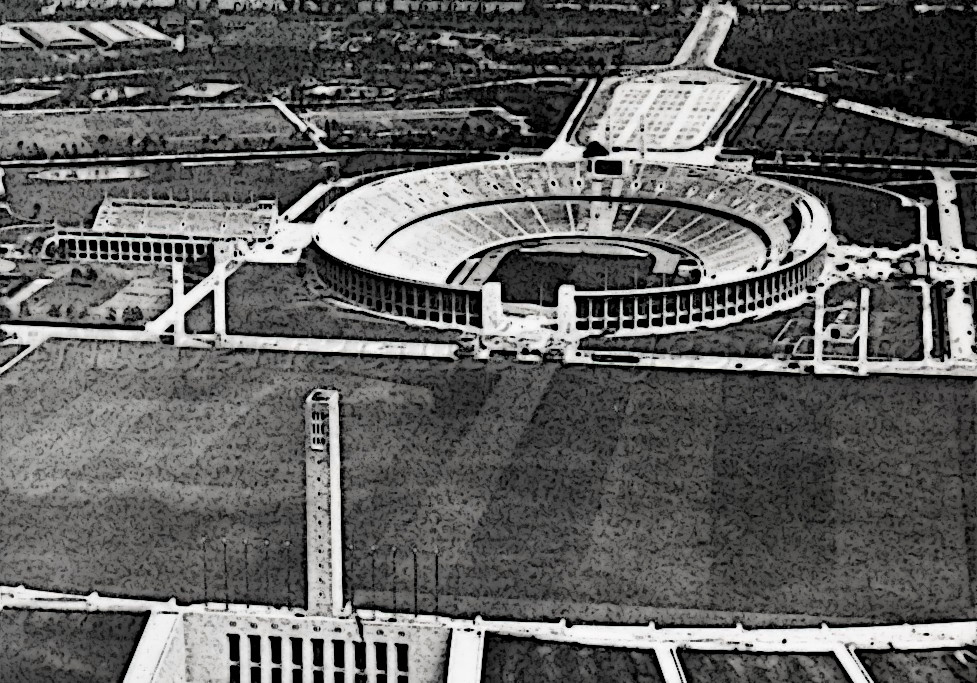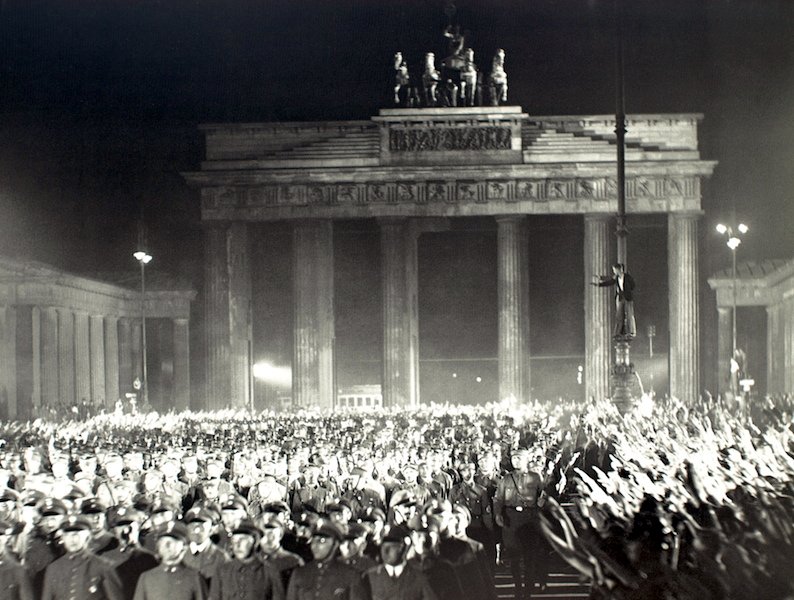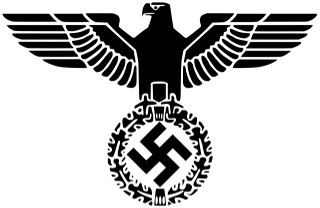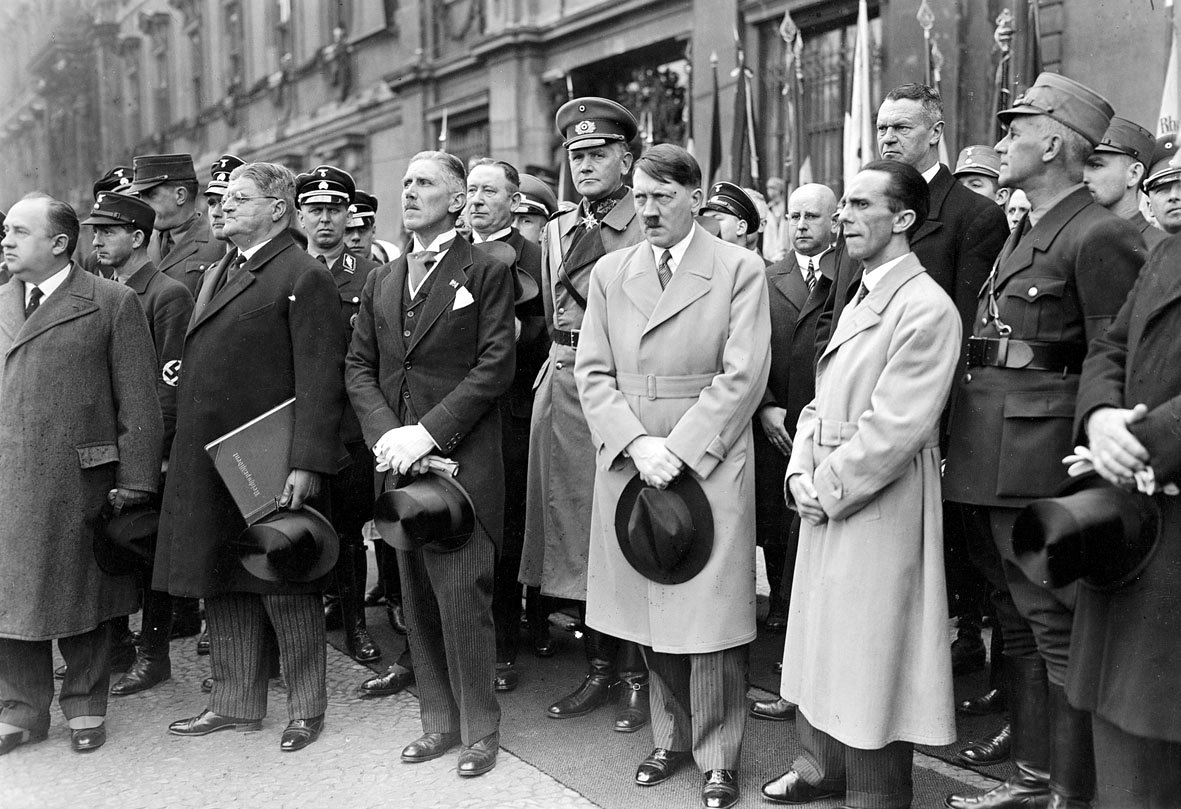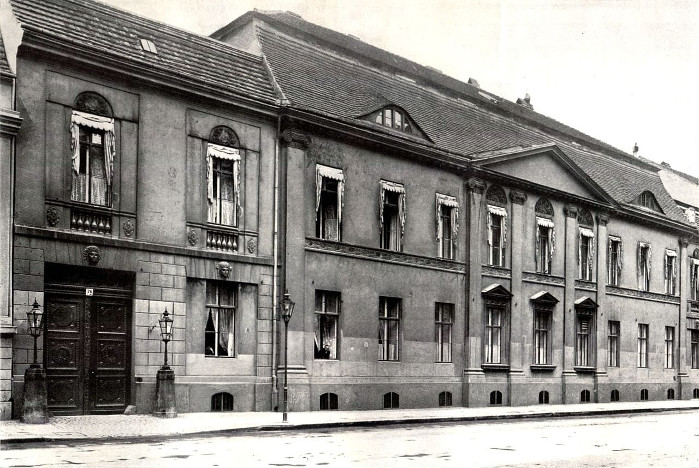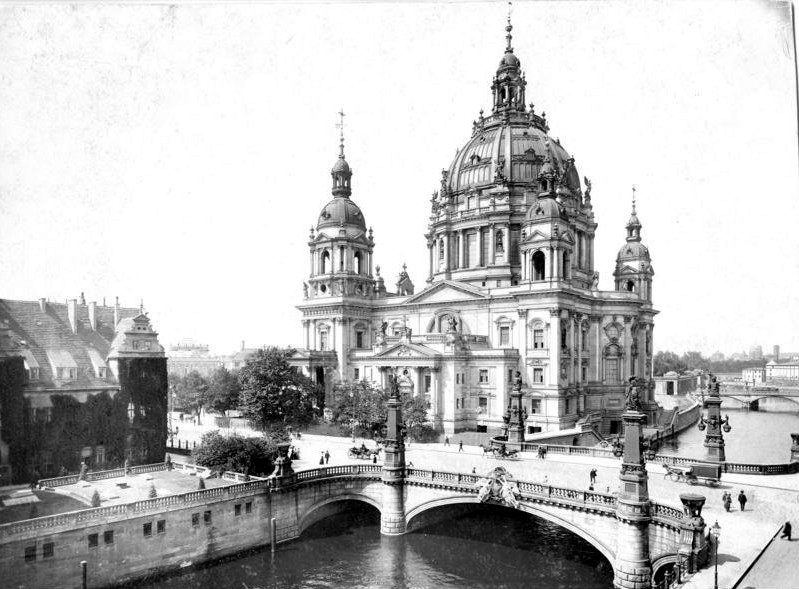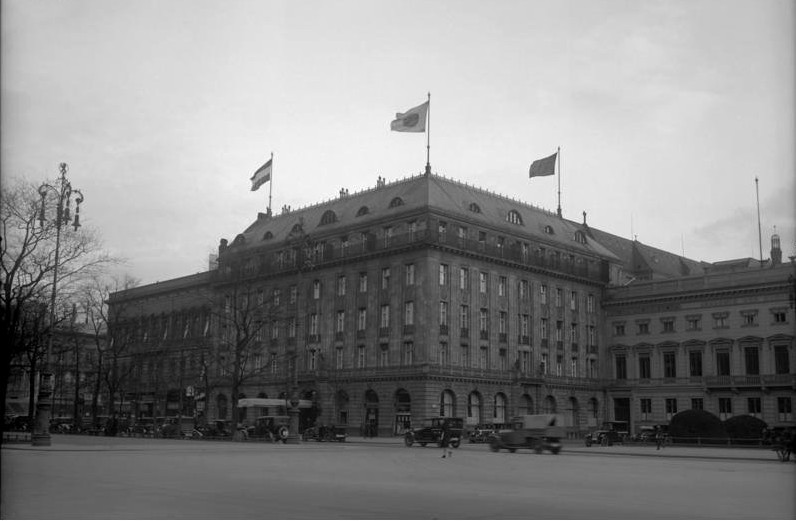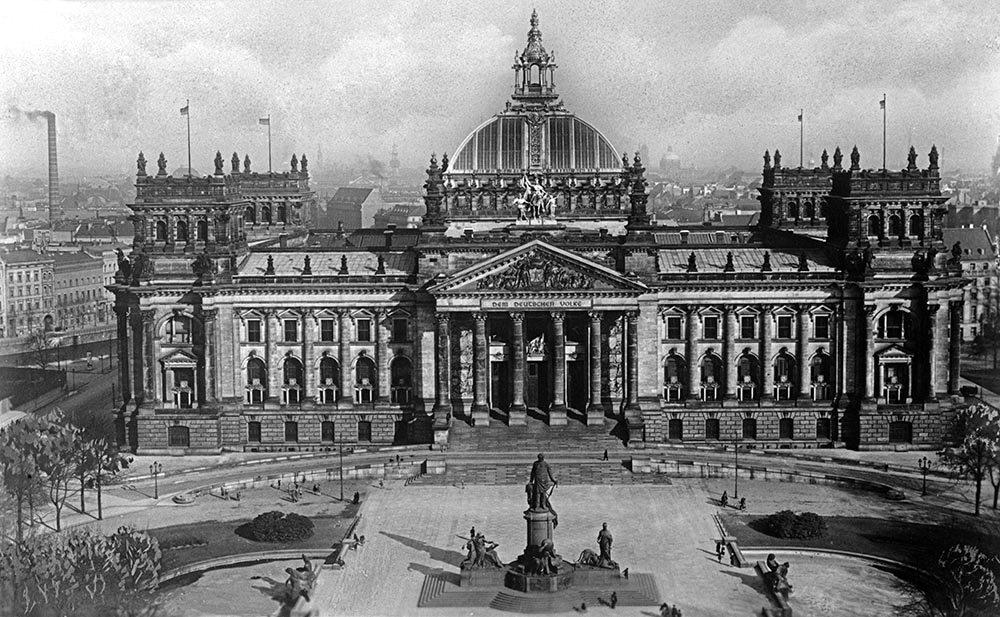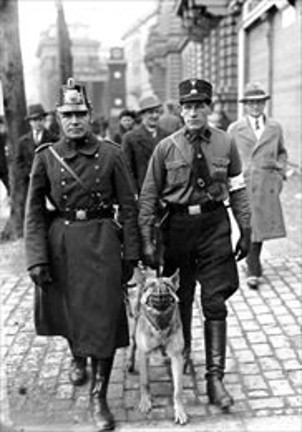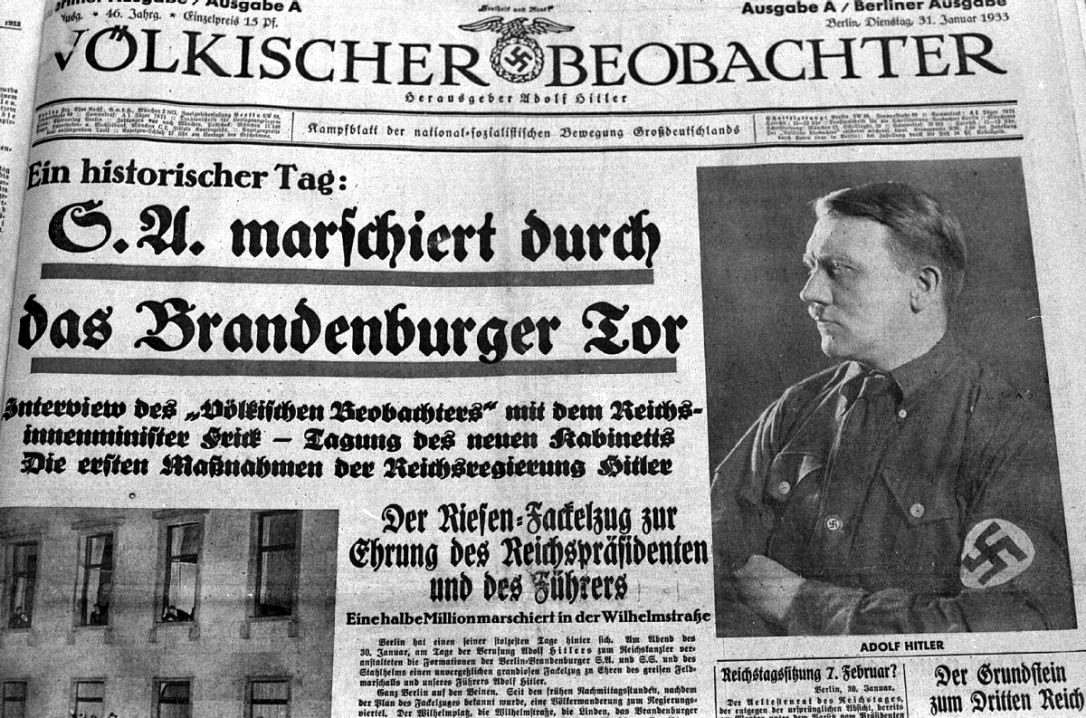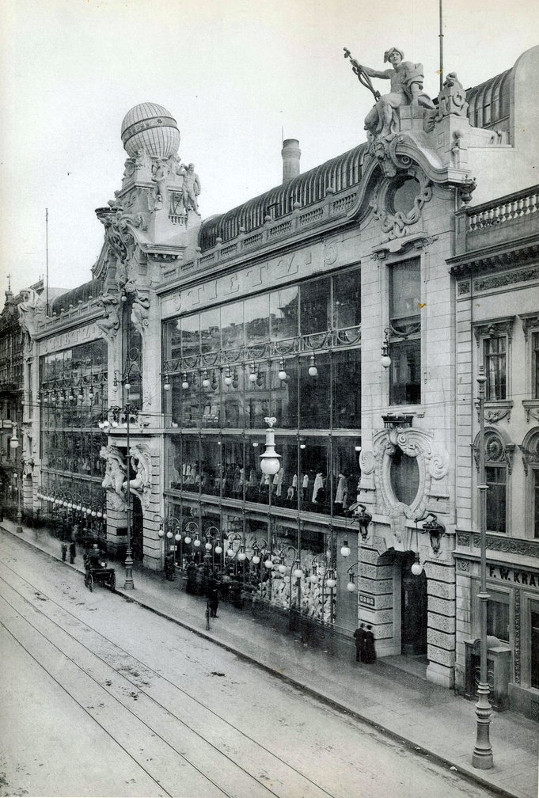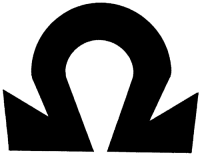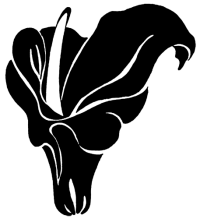Berlin 1933
- Germany -B33- Berlin -B33- Alternative Berlin -B33- Past Imperfect
Präludium: A City's Journey into Darkness
At the end of World War I, monarchy and aristocracy was overthrown and Germany became a republic, known as the Weimar Republic. Berlin remained the capital, but faced a series of threats from the far left and far right.
In late 1918 politicians inspired by the Communist Revolution in Russia founded the Communist Party of Germany (Kommunistische Partei Deutschlands, KPD). In January 1919 it tried to seize power in the Spartacist revolt). The coup failed and at the end of the month right-wing Freikorps forces killed the Communist leaders Rosa Luxemburg and Karl Liebknecht.
In March 1920 Wolfgang Kapp, founder of the right wing German Fatherland Party (Deutsche Vaterlands-Partei), tried to bring down the government. The Berlin garrison chose his side, and the government buildings were occupied (the government had already left Berlin). A general strike stopped the putsch being successful.
In October 1, 1920: The Greater Berlin Act created "Greater Berlin" (Groß-Berlin) by incorporating several neighboring towns and villages like Charlottenburg, Köpenick or Spandau from the Province of Brandenburg into the city; Berlin's population doubled overnight from about 2 to nearly 4 million inhabitants.
In 1922: The foreign minister Walther Rathenau was murdered in Berlin, and half a million people attended his funeral.
The economic situation was bad. Germany owed reparation money after the Treaty of Versailles. The sums were reduced and paid using loans from New York banks. In response to French occupation, the government reacted by printing so much money that inflation was enormous. Especially pensioners lost their savings; everyone else lost their debts. At the worst point of the inflation one dollar was worth about 4.2 trillion marks. From 1924 onwards the situation became better because of newly arranged agreements with the allied forces, American help, and a sounder fiscal policy. The heyday of Berlin began. It became the largest industrial city of the continent. People like the architect Walter Gropius, physicist Albert Einstein, painter George Grosz and writers Arnold Zweig, Bertolt Brecht and Kurt Tucholsky made Berlin one of the major cultural centers of Europe. Brecht spent his last years in the Weimar-era Berlin (1930–1933) working with his ‘collective’ on the Lehrstücke. Night life bloomed in 1920s Berlin.
In 1922, the railway system, that connected Berlin to its neighboring cities and villages was electrified and transformed into the S-Bahn, and a year later Tempelhof airport was opened. Berlin was the second biggest inland harbor of the country. All this infrastructure was needed to transport and feed the over 4 million Berliners.
Before the 1929 crash, 450,000 people were unemployed. In the same year Adolf Hitler's Nazi Party won its first seats in the city parliament. Nazi Propaganda chief Joseph Goebbels became Gauleiter (party district leader) of Berlin in 1926. On July 20, 1932, the Prussian government under Otto Braun in Berlin was dismissed by presidential decree. The republic was nearing its breakdown, under attack by extreme forces from the right and the left. On January 30, 1933, Hitler became Chancellor of Germany.
Quote
"Among the higher leadership [in the Nazi Party], while there is still a certain unity, personalities are beginning to play a constantly greater part. Hitler is perhaps more powerful than before, but he becomes more and more a figure separated from actualities. He depends a great deal on Hess, who is really his confidential man now and whom it is likely he may make Foreign Minister. Goering and Goebbels still remain good comrades of Hitler and are undoubtedly attached to him, but the difference* between Goering and Goebbels are becoming more evident. Goering is more moderate, while Goebbels, sensing the feeling of the masses and being above all an opportunist is becoming more radical. If It would come to a show-down between the radical and moderate elements, Goering would, however, undoubtedly be likely to be on the radical side as the one having the more chances. … If this Government remains in power for another year and carries on in the same measure in this direction, it will go far towards making Germany a danger to world peace for years to come."
"This is a very disjointed and incoherent letter. I am dictating it under pressure as I wish to catch the courier pouch. What I do want to say really is that for the present this country is headed in directions which can only carry ruin to it and will create a situation here dangerous to world peace. With few exceptions, the men who are running this Government are of a mentality that you and I cannot understand. Some of them are psychopathic cases and would ordinarily be receiving treatment somewhere. Others are exalted and in a frame of mind that knows no reason. The majority are woefully ignorant and unprepared for the tasks which they have to carry through every day. Those men in the party and in responsible positions who are really worth-while, and there are quite a number of these, are powerless because they have to follow the orders of superiors who are suffering from the abnormal psychology prevailing in the country."
-- George S. Messersmith, U.S. Consul General at Berlin to the Under Secretary of State, William Phillips, letter dated 26 June 1933
Appearance
City Device
Climate
Berlin has a Maritime temperate climate according to the Köppen climate classification system. There are significant influences of mild continental climate due to its inland position, with frosts being common in winter and there being larger temperature differences between seasons than typical for many oceanic climates. Summers are warm and sometimes humid with average high temperatures of 22–25 °C (72–77 °F) and lows of 12–14 °C (54–57 °F). Winters are cool with average high temperatures of 3 °C (37 °F) and lows of −2 to 0 °C (28 to 32 °F). Spring and autumn are generally chilly to mild. Berlin's built-up area creates a microclimate, with heat stored by the city's buildings and pavement. Temperatures can be 4 °C (7 °F) higher in the city than in the surrounding areas.
Annual precipitation is 570 millimeters (22 in) with moderate rainfall throughout the year. Snowfall mainly occurs from December through March.
Calendars
Demonym
Berliner
Economy of Nazi Germany
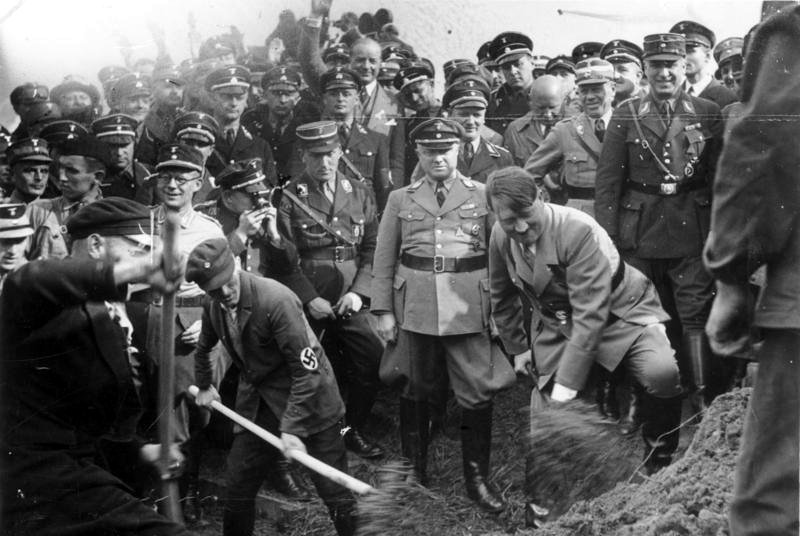
The German economy, like those of many other western nations, suffered the effects of the Great Depression with unemployment soaring around the Wall Street Crash of 1929. When Hitler became Chancellor in 1933, he introduced policies aimed at improving the economy of Nazi Germany. The changes included privatization of state industries, autarky, and tariffs on imports. Wages increased by 10.9% in real terms during this period. However, reduced foreign trade meant rationing in consumer goods like poultry, fruit, and clothing for many Germans.
By the early 1940s, over 500 companies in key German industries had been nationalized, mostly accomplished through the creation of the Reichswerke Hermann Göring in 1937. Multi-national industries in occupied territory were particularly targeted for state ownership, where the Reichswerke absorbed between approximately “50 – 60 per cent” of heavy industry in Czech and slightly less in Austria. The Göring industrial empire was a major attempt towards “restricting private industrial capitalism and substituting a ‘völkisch’, state-run industrial economy.”
In 1934 Hjalmar Schacht, the Reich Minister of Economics, introduced the Mefo bills, allowing Germany to rearm without spending Reichsmarks but instead paying industry with Mefo bills (Government IOU's) which they could trade with each other. Between 1933 and 1939 the total revenue amounted to 62 billion marks, whereas expenditure (at times comprising up to 60% rearmament costs) exceeded 101 billion, thus causing a huge deficit and national debt (reaching 38 billion marks in 1939 and coinciding with Kristallnacht [November 1938] and with intensified persecutions of Jews and the outbreak of World War II.) By 1938 unemployment was practically extinct.
Geography
Verwaltungsbezirke: The Greater Berlin Act
he Greater Berlin Act (German: Groß-Berlin-Gesetz), in full the Law Regarding the Reconstruction of the New Local Authority of Berlin (German: Gesetz über die Bildung einer neuen Stadtgemeinde Berlin), was a law passed by the Prussian government in 1920 that greatly expanded the size of the German capital of Berlin.
History
Berlin had been part of the Province of Brandenburg since 1815. On 1 April 1881, the city became Stadtkreis Berlin, a city district separate from Brandenburg. The Greater Berlin Act was passed by the Prussian parliament on 27 April 1920 and came into effect on 1 October of the same year. The region then termed Greater Berlin acquired territories from the Province of Brandenburg and consisted of the following:
- -- Alt-Berlin -- The old city of Berlin.
- -- The seven towns that surrounded Berlin: Charlottenburg, Köpenick, Lichtenberg, Neukölln, Schöneberg, Spandau and Wilmersdorf.
- -- Fifty-nine rural communities and twenty-seven estate districts from the surrounding districts of Niederbarnim, Osthavelland and Teltow.
- -- The grounds of the Berliner Stadtschloss (which curiously, until this point, formed an estate district in its own right).
The act increased the area of Berlin 13-fold from 66 km² (25.5 mi²) to 883 km² (341 mi²) and the population doubled from approximately 1.9 million to near 4 million, with almost 1.2 million of these new inhabitants coming from the 7 surrounding towns alone.
Greater Berlin
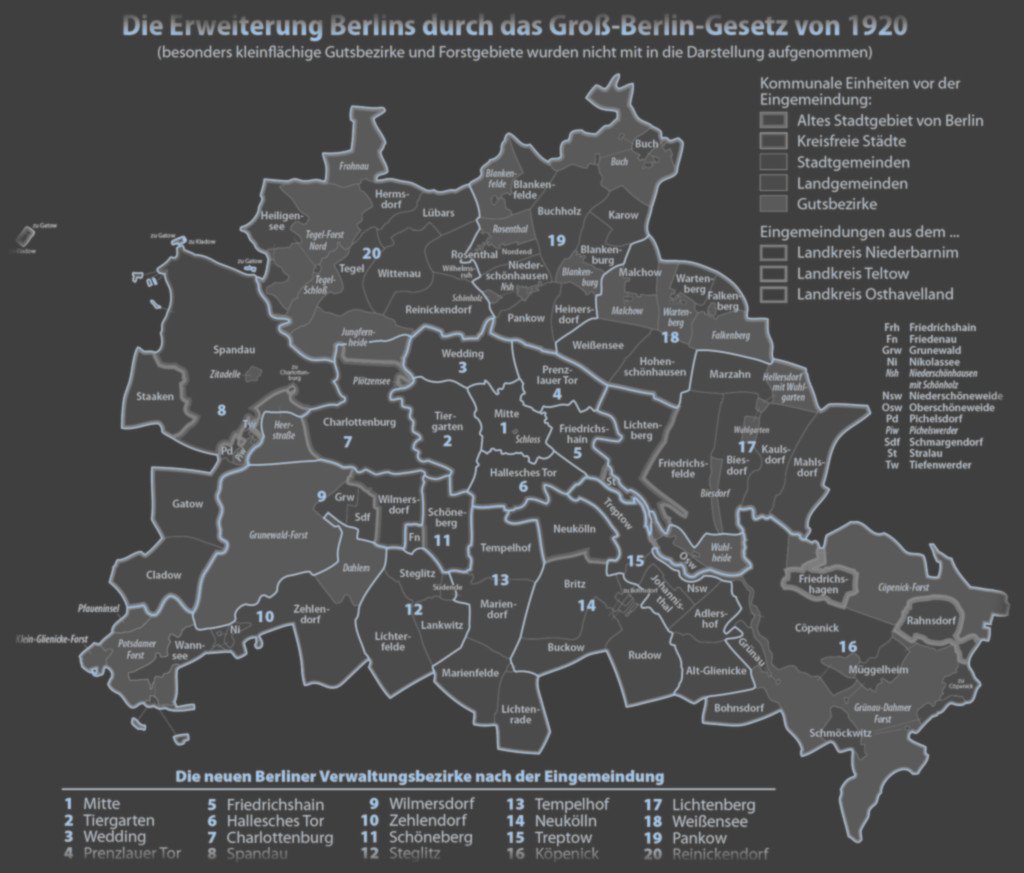
Greater Berlin was then sub-divided into 20 boroughs (Verwaltungsbezirke):
- -- Alt-Berlin (Mitte, Tiergarten, Wedding, Prenzlauer Berg, Kreuzberg and Friedrichshain)
- -- The seven previously independent towns (Charlottenburg, Köpenick, Lichtenberg, Neukölln, Schöneberg, Spandau and Wilmersdorf).
- -- The seven new boroughs created from the remaining added areas, each named after the largest village in the area at the time (Pankow, Reinickendorf, Steglitz, Tempelhof, Treptow, Weißensee and Zehlendorf).
Through this law, it became possible to implement integrated town planning across the whole of Greater Berlin. With this, the act was an important foundation for the rise of Berlin to a cultural centre of Europe in the 1920s.
Terminology
- -- Verwaltungsbezirke -- A borough of Berlin. (Short form: Bezirke)
- -- Ortsteile -- A sub-districts or neighborhood of Berlin.
- -- Kiez -- The smaller residential areas or quarters which commonly make up the sub-districts. The term Kiez is from the Berlin dialect.
Each borough is governed by a borough council (Bezirksamt) consisting of five councilors (Bezirksstadträte) including the borough mayor (Bezirksbürgermeister). The borough council is elected by the borough assembly (Bezirksverordnetenversammlung). The boroughs of Berlin are not independent municipalities. The power of borough administration is limited and subordinate to the Senate of Berlin. The borough mayors form the council of mayors (Rat der Bürgermeister), led by the city's governing mayor, which advises the senate. The neighborhoods have no local government bodies.
Boroughs
Alt-Berlin
- -- Mitte 1933 --
- -- Tiergarten 1933 --
- -- Wedding 1933 --
- -- Prenzlauer Berg 1933 --
- -- Kreuzberg 1933 --
- -- Friedrichshain 1933 --
The Seven Formerly Independent Towns
- -- Charlottenburg 1933 --
- -- Köpenick 1933 --
- -- Lichtenberg 1933 --
- -- Neukölln 1933 --
- -- Schöneberg 1933 --
- -- Spandau 1933 --
- -- Wilmersdorf 1933 --
The Seven New Boroughs
- -- Pankow 1933 --
- -- Reinickendorf 1933 --
- -- Steglitz 1933 --
- -- Tempelhof 1933 --
- -- Treptow 1933 --
- -- Weißensee 1933 --
- -- Zehlendorf 1933 --
History
German Empire (1871–1918): The Imperial Capital
After the quick victory of an alliance of German states over France in the 1870 war, the German Empire was established in 1871. Bismarck had fought and succeeded in leaving out Austria, Prussia's long standing competitor, and Prussia became the largest and by far most influential state in the new German Empire, and in turn Germany became the most powerful nation in Europe. Wilhelm I became emperor ("Kaiser"). Bismarck became Chancellor and made Berlin the center of European power politics. The imperial government and the military establishment expanded dramatically, bringing together the landed junker nobility, the rich bankers and industrialists, and the most talented scientists and scholars. In 1884 came the parliament building, the Reichstag. Municipal government was handled in two parts. The ministry of police reported to the Prussian government and took control of crime, markets, and fire fighting. The civil government had a mayor appointed by the city council. It comprised 144 members elected in 48 wards by universal manhood suffrage. It handled the water supply and sanitation, streets, hospitals and charitable operations and schools.
In 1870, the sanitary conditions in Berlin were among the worst in Europe. August Bebel recalled conditions before a modern sewer system was built in the late 1870s:
"Waste-water from the houses collected in the gutters running alongside the curbs and emitted a truly fearsome smell. There were no public toilets in the streets or squares. Visitors, especially women, often became desperate when nature called. In the public buildings the sanitary facilities were unbelievably primitive....As a metropolis, Berlin did not emerge from a state of barbarism into civilization until after 1870."
The primitive conditions were intolerable for a world national capital, and the Imperial government brought in its scientists, engineers and urban planners to not only solve the deficiencies but to forge the world's model city. A British expert in 1906 concluded that Berlin represented "the most complete application of science, order and method of public life," adding "it is a marvel of civic administration, the most modern and most perfectly organized city that there is."
In the meantime, Berlin had become an industrial city with 800,000 inhabitants. Improvements to the infrastructure were needed; in 1896 the construction of the subway (U-Bahn) began and was completed in 1902. The neighborhoods around the city center (including Kreuzberg, Prenzlauer Berg, Friedrichshain and Wedding) were filled with tenement blocks. The surroundings saw extensive development of industrial areas East of Berlin and wealthy residential areas in the South-West.
In terms of high culture, museums were being built and enlarged, and Berlin was on the verge of becoming a major musical city. Berlin dominated the German theater scene, with the government-supported Opernhaus and Schauspielhaus, as well as numerous private playhouses included the Lessing and the Deutsches theatres. They featured the modern plays of Ernst von Wildenbruch, Hermann Sudermann, and Gerhart Hauptmann. who managed to work around the puritanical censorship imposed by the Berlin police.
Imperial Berlin: 1900 -1918 https://www.youtube.com/watch?v=B-m9A8mY-U0 <Take a look, why don't you.>
Prehistory of National Socialism
- 1834 – The term "Nationalsozialismus" first appears in print, in Börsenblatt für den deutschen Buchhandel (Exchange tables for the German book trade) at page 36.
- 1841 – German economist Friedrich List's Das Nationale System der Politischen Ökonomie (National System of Political Economy) is published, espousing settlement farming and agricultural expansion eastwards along with economic industrialization manipulated by the state, and the establishment of a German-dominated European economic sphere as part of the solution to Germany's economic woes (predecessor ideas to Nazi imperialism).
- 1856 – French aristocrat and author, Arthur de Gobineau, publishes his Treatise on the Inequality of Human Races in which he divides the human species into three races, black, white, and yellow; arguing therein that racial distinctions form a clear and natural genetic barrier of sorts. Gobineau also wrote that racial mixing would lead to chaos. While not an anti-Semite, his work is often characterized as philosemitic (since he wrote positively about the Jews), but it is still considered an early manifestation of scientific racism. Historian Joachim C. Fest, in his seminal biography entitled Hitler, claims that Arthur de Gobineau's negative views on race mixing influenced Hitler and thereby, the ideology of National Socialism.
- 1870 – The term "National Socialism" first appears in English, in "The sects of the Russian Church", The North British Review, Volumes 52-53.
- 1878 – Founding year of the anti-Semitic Christian Social Worker's Party by Adolf Stoecker.
- 1884 – "National Socialism" is mentioned in "Fabian Tracts", Fabian Publications, Great Britain.
- 1888 – German jurist and international law reformer, Franz von Liszt argues that criminal characteristics are innate as opposed to being determined by a person's social environment and coins the term, Kriminalbiologie (Criminal Biology), a theory which renders criminals incapable of rehabilitation and would later influence Nazi anthropologists and racial hygiene proponents in their justification for sterilization and euthanasia.
- 1889 – 20 April Adolf Hitler born at Braunau am Inn, Austria.
- 1891 – Formation of Pan-German League ; Wilhelm Schallmayer publishes a treatise on eugenics, espousing that the neglect of a nation's racial fitness could have negative political consequences for a state.
- 1895 – Alfred Ploetz coins the term Rassenhygiene (Racial Hygiene).
- 1896 – The Czech National Social Party is formed.
- 1897 – Franko Stein moves a small periodical Der Hammer from Vienna to Eger.
- 1898 – May – Maurice Barrès, while standing as a nationalist candidate for Nancy, France, coins the term "Socialist Nationalism".
- 1898 – German Workers Congress is organized by Stein in Eger (Cheb).
- 1899 – Houston Stewart Chamberlain writes Die Grundlagen des Neunzehnten Jahrhunderts (The Foundations of the Nineteenth Century), a work which influenced many prominent Nazis. Ludwig Woltmann also publishes a tract asserting the superiority of Germanic people and promotes the need for additional Lebensraum (living space).
- 1902 – April – Organization of Nationalistic Labor takes place in Saaz.
- 1903 – 15 November – Deutsche Arbeiterpartei in Österreich is formed. (DAP)
- 1904 – Hans Knirsch proposes to add "National Socialist" to the Austrian DAP name, but the proposal is rejected by party congress conferees.
- 1905 – Racial Hygiene Society founded by Alfred Ploetz.
- 1909 – An "All-Austrian" congress of the German Workers’ Party is held in Prague.
- 1912 – Controversial book, Wenn ich der Kaiser wär (If I were the emperor) by Heinrich Class appears, a work which promotes imperialism, rife with Pan-Germanism and antisemitic commentary.
Labor Unions
Berlin, with its large numbers of industrial workers by 1871 became the headquarters for most of the national labor organizations, and the favorite meeting place for labor intellectuals. inside the city, the unions had a turbulent history. The conservative aftermath of the Revolution of 1848 drained their strength, and internal bickering was characteristic of the 1850s and 1860s. Many locals were under the control of reformist, bourgeois leaders who competed with each other and had a negative view of Marxism and socialist internationalist. They concentrated on wages, hours and control the workplace, and gave little support to nationalist organizations such as the Allgemeine Deutsche Arbeiterverein (ADAV) founded in 1863. By the 1870s, however, the Lassallean ADAV finally gained strength; it joined together with the Social Democratic Worker's Party (SDAP) in 1874. Henceforth the city's labor movement supported radical socialism and gained preeminence within the German labor movement. Germany had universal manhood suffrage after 1871, but the government was controlled by hostile forces, and Chancellor Otto von Bismarck tried to undermine or destroy the union movement.
First World War
The "spirit of 1914" was the overwhelming, enthusiastic support of all elements of the population for war in 1914. In the Reichstag, the vote for credits was unanimous, with all the Socialists joining in. One professor testified to a "great single feeling of moral elevation of soaring of religious sentiment, in short, the ascent of a whole people to the heights." At the same time, there was a level of anxiety; most commentators predicted the short victorious war – but that hope was dashed in a matter of weeks, as the invasion of Belgium bogged down and the French Army held in front of Paris. The Western Front became a killing machine, as neither army moved more than ten thousand yards at a time. There had been no preparations before the war, and no stockpiles of essential goods. Industry was in chaos, unemployment soared while it took months to reconvert to munitions productions. In 1916, the Hindenburg Program called for the mobilization of all economic resources to produce artillery, shells, and machine guns. Church bells and copper roofs were ripped out and melted down.
Conditions on the home-front worsened month by month, for the British blockade of Germany cut off supplies of essential raw materials and foodstuffs, while the conscription of so many farmers (and horses) reduced the food supply. Likewise, the drafting of miners reduced the main energy source, coal. the textile factories produced Army uniforms, and warm clothing for civilians ran short. The device of using ersatz materials, such as paper and cardboard for cloth and leather proved unsatisfactory. Soap was in short supply, as was hot water.
Morale of both civilians and soldiers continued to sink but using the slogan of "sharing scarcity" the Berlin bureaucracy ran an efficient rationing system nevertheless. The food supply increasingly focused on potatoes and bread as it was harder and harder to buy meat. Rationing was installed, and soup kitchens were opened. The meat ration in late 1916 was only 31% of peacetime, and it fell to 12% in late 1918. The fish ration was 51% in 1916, and none at all by late 1917. The rations for cheese, butter, rice, cereals, eggs and lard were less than 20% of peacetime levels. In 1917 the harvest was poor, and the potato supply ran short, and Germans substituted almost inedible turnips; the "turnip winter" of 1917-18 was remembered with bitter distaste for generations.
German women were not employed in the Army, but large numbers took paid employment in industry and factories, and even larger numbers engaged in volunteer services. Housewives were taught how to cook without milk, eggs or fat; agencies helped widows find work. Banks, insurance companies and government offices for the first time hired women for clerical positions. Factories hired them for unskilled labor – by December 1917, half the workers in chemicals, metals, and machine tools were women. Laws protecting women in the workplace were relaxed, and factories set up canteens to provide food for their workers, lest their productivity fall off. The food situation in 1918 was better, because the harvest was better, but serious shortages continued, with high prices, and a complete lack of condiments and fresh fruit. Many migrants had flocked into Berlin to work in industry and the government ministries, which made for overcrowded housing. Reduced coal supplies left everyone in the cold. Daily life involved long working hours, poor health, and little or no recreation, as well as increasing anxiety for the safety of loved ones in the Army and in prisoner of war camps. The men who returned from the front were those who had been permanently crippled; wounded soldiers who recovered were sent back to the trenches.
The Spirit of 1914 & the Reality of War: https://www.youtube.com/watch?annotation_id=annotation_636906991&feature=iv&src_vid=B-m9A8mY-U0&v=CErUTpuDbd8 <Peer into the Past!>
National Socialism during World War I
- 1914
- 28 July – World War I breaks out.
- 2 August – Adolf Hitler receives permission to enlist; joins the 16th Bavarian Reserve Infantry Regiment in Munich
- 30 October – Adolf Hitler is transferred to regimental staff as a runner.
- 1 November – Adolf Hitler is promoted to Gefreiter, the equivalent of a senior private or corporal.
- 1916
- Eugenicist Madison Grant publishes – "The Passing of the Great Race" which promotes the genetic supremacy of the Nordic race while warning of its racial decline, a treatise quickly embraced by members of the German racial hygiene movement.
- 1917
- September – Pan-Germanic Deutsche Vaterlandspartei (German Fatherland Party) emerges under the leadership of Admiral Alfred von Tirpitz and Wolfgang Kapp, the party’s co-founders. The infamous “stab-in-the-back myth” used by right-wing organizations as a political platform allegedly originated with this party.
- 1918
March – Anton Drexler founded a branch of Freien Arbeiterausschuss für einen guten Frieden (Free Workers' Committee for a good Peace) league in Munich. 17 July – Adolf Hitler saves the life of the 9th Company Commander. 4 August – Adolf Hitler awarded the Iron Cross, 1st Class. 13 October – Adolf Hitler gassed near Ypres. 7 November – 100,000 workers march on the Royal House of Wittelsbach. Kaiser Wilhelm II flees. 8 November – All 22 of Germany’s lesser kings, princes, grand dukes, and ruling dukes have been deposed. Kaiser Wilhelm told to abdicate. 9 November – Emil Eichhorn, radical leftist of the Independent Socialists, leads an armed mob and seizes the HQ of Berlin; Kaiser Wilhelm consents to abdicate; Social Democrats demand government from Prince Max; Friedrich Ebert assumes the chancellery; First German Republic established. 11 November – First World War ends. 19 November – Hitler discharged from hospital at Pasewalk. December – German conservative organization, Stahlhelm, Bund der Frontsoldaten founded by former German Army reserve officer and industrialist Franz Seldte in Magdeburg. Mid-December – First Freikorps unit formed; Maercker Volunteer Rifles.
- 1919
- January – Independent Socialists and Spartacist League staged large protests, known as the Spartacist uprising; large sections of Berlin seized; German Gov. moved to the city of Weimar.
- 5 January – German Workers' Party (DAP) is founded from the branch of "Free Workers' Committee for a good Peace" league and the Political Workers' Circle in Munich.
- 10 January – Battle of Berlin begins; Counter-revolution with Freikorps takes crucial role.
- 13 January – Battle of Berlin ends.
- 15 January – Communist leaders Karl Liebknecht and Rosa Luxemburg are murdered by Freikorps officers
- March – Adolf Hitler finishes job of guarding Russian prisoners.
- 3 March – 2nd Battle for Berlin; Communists seize Berlin; Gustav Noske appointed dictator of Germany.
- 7 March – Communist Strike Committee withdraws proclamation and makes peace overtures to government.
- 10 March – Gustav Noske orders Peoples’ Naval Division disbanded. Battle for Berlin over.
- 14 April – Freikorps suppress communists in Dresden.
- 16 April – "Battle" of the Bavarian government troops at Dachau; Communists defeat Republican forces.
- 18 April – Freikorps suppress communists in Brunswick.
- 27 April – Battle for Munich occurs between Communists and Freikorps units.
- 2 May – City of Munich taken; not declared secure until May 6; approximately 1200 Communists slaughtered.
- 10 May – Freikorps suppress communists in Leipzig.
- 22 June – German Reichstag ratifies the Versailles Treaty.
- 28 June – Versailles Treaty signed in the Hall of Mirrors (Palace of Versailles).
Weimar Republic (1918–1933)
At the end of World War I, monarchy and aristocracy was overthrown and Germany became a republic, known as the Weimar Republic. Berlin remained the capital, but faced a series of threats from the far left and far right.
In late 1918 politicians inspired by the Communist Revolution in Russia founded the Communist Party of Germany (Kommunistische Partei Deutschlands, KPD). In January 1919 it tried to seize power in the Spartacist revolt). The coup failed and at the end of the month right-wing Freikorps forces killed the Communist leaders Rosa Luxemburg and Karl Liebknecht.
In March 1920 Wolfgang Kapp, founder of the right wing German Fatherland Party (Deutsche Vaterlands-Partei), tried to bring down the government. The Berlin garrison chose his side, and the government buildings were occupied (the government had already left Berlin). A general strike stopped the putsch being successful.
In October 1, 1920: The Greater Berlin Act created "Greater Berlin" (Groß-Berlin) by incorporating several neighboring towns and villages like Charlottenburg, Köpenick or Spandau from the Province of Brandenburg into the city; Berlin's population doubled overnight from about 2 to nearly 4 million inhabitants.
In 1922: The foreign minister Walther Rathenau was murdered in Berlin, and half a million people attended his funeral.
The economic situation was bad. Germany owed reparation money after the Treaty of Versailles. The sums were reduced and paid using loans from New York banks. In response to French occupation, the government reacted by printing so much money that inflation was enormous. Especially pensioners lost their savings; everyone else lost their debts. At the worst point of the inflation one dollar was worth about 4.2 trillion marks. From 1924 onwards the situation became better because of newly arranged agreements with the allied forces, American help, and a sounder fiscal policy. The heyday of Berlin began. It became the largest industrial city of the continent. People like the architect Walter Gropius, physicist Albert Einstein, painter George Grosz and writers Arnold Zweig, Bertolt Brecht and Kurt Tucholsky made Berlin one of the major cultural centers of Europe. Brecht spent his last years in the Weimar-era Berlin (1930–1933) working with his ‘collective’ on the Lehrstücke. Night life bloomed in 1920s Berlin.
In 1922, the railway system, that connected Berlin to its neighboring cities and villages was electrified and transformed into the S-Bahn, and a year later Tempelhof airport was opened. Berlin was the second biggest inland harbor of the country. All this infrastructure was needed to transport and feed the over 4 million Berliners.
Before the 1929 crash, 450,000 people were unemployed. In the same year Adolf Hitler's Nazi Party won its first seats in the city parliament. Nazi Propaganda chief Joseph Goebbels became Gauleiter (party district leader) of Berlin in 1926. On July 20, 1932, the Prussian government under Otto Braun in Berlin was dismissed by presidential decree. The republic was nearing its breakdown, under attack by extreme forces from the right and the left. On January 30, 1933, Hitler became Chancellor of Germany.
Growth of the Nazi Party during the Weimar Republic
- 1919
- 12 August – The Weimar Constitution is announced.
- 12 September – Adolf Hitler joins the German Workers' Party (DAP) in Munich, becoming its 55th member. In less than a week, Hitler received a postcard stating he had officially been accepted as a party member.
- Late fall – Freikorps fight the Red Army in the Baltic, eventually retreat in chaos; first Silesian uprising, in which many Freikorps see combat.
- 1920
- Many Freikorps were disbanded. Some go underground, to reappear later.
- January – The DAP grows to 190 members.
- February – Inter-Allied Control Commission order 2/3 of Freikorps disbanded; DAP changes its name to National Socialist German Workers’ Party (NSDAP).
- 24 February – First public meeting of the NSDAP. The party announces its first programme, known as the "25 points."
- 13 March to 17 March – Kapp Putsch
- 31 March – Adolf Hitler mustered out of the army.
- April – Government stops paying Freikorps units.
- 3 April – 21 different Freikorps units, under the command of General Baron Oskar von Watter, annihilate the Ruhr Uprising in five days; thousands killed.
- 10 May – Dr. Joseph Wirth and Walter Rathenau announce their "Policy of Fulfillment"; not received well by nationalist groups.
- 8 August – Founding date of the NSDAP
- 11 August – National Disarmament Law takes effect; disbands civil guards.
- 19 August to 25 August – Second Silesian uprising, German Freikorps see more combat.
- 17 December – NSDAP buys its first paper, the Völkischer Beobachter.
- 31 December – NSDAP party membership was recorded at 2000.
- 1921
- Third Silesian uprising – German forces see more combat.
- Hermann Erhardt forms Organisation Consul, a paramilitary group, out of former members of his banned Freikorps.
- Eugen Fischer, Erwin Baur, and Fritz Lenz publish the standard work of German racialism, Menschliche Erblichkeitslehre und Rassenhygiene (Human Hereditary Teaching and Racial Hygiene), a work which later helps form part of the scientific basis to the Nazi racial hygiene policies and their euthanasia campaign.
- February – Highly effective at speaking to large audiences—Hilter spoke to a crowd of over 6,000 in Munich.
- 28 July – Adolf Hitler is elected Vorsitzender (chairman) of the NSDAP with only one dissenting vote. Executive Committee of the party is dissolved. Party Founder Anton Drexler is made "Honorary Chairman" and resigns from the party soon after. Hitler soon begins to refer to himself as "Der Führer" (The Leader).
- August – NSDAP party membership was recorded at 3,300.
- 1922
- Prototype versions of the Hitler Youth form.
- The Prussian State Health Commission for Racial Hygiene (Preussischer Landesgesundheitsrat für Rassenhygiene) works to centralise the institute's research concerning the practical application of racial hygiene, eugenics and anthropology.
- 12 January – Adolf Hitler sentenced to three months for disturbance of 14 September 1921.
- 24 June – Hitler incarcerated; German Foreign Minister Walther Rathenau assassinated, some involved are in the Organisation Consul.
- July – Inflation hits the German economy: 670 RM = 1 US$
- 27 July – Hitler released.
- August – 2,000 RM = 1 USD
- October – 4,500 RM = 1 USD
- 28 October – Benito Mussolini establishes his Fascist dictatorship in Italy.
- November – 10,000 RM = 1 USD
- 22 November – Dr. Wirth leaves office
- 27 December – France occupies the Ruhr.
- 1923
- 28 January – First Parteitage (Nazi Party Day) held under the slogan Deutschland Erwache (Germany Awake) in Munich.
- February – Reichsbank buys back RM; stabilizes RM at 20,000 to 1 USD
- 4 May – RM 40,000 = 1 USD
- 27 May – Albert Leo Schlageter, a German freebooter and saboteur, executed by a French firing squad in the Ruhr. Hitler declared him a hero that the German people was not worthy to possess.
- 1 June – RM 70,000-1 USD
- 30 June – RM 150,000-1USD
- 1-7 August – Inflation became hyperinflation: RM 3,500,000-1USD
- 13 August – Dr. Wilhelm Cuno leaves office
- 15 August – RM 4,000,000-1USD
- 1 September – German Day Rally takes place in Nuremberg / RM 10,000,000-1USD
- 24 September – Chancellor Stresemann ends the passive resistance in the Ruhr; infuriates the nationalists.
- 30 September – Major Fedor von Bock crushes a coup attempt by the Black Reichswehr. RM 60,000,000-1USD
- 6 October – Dr. Gustav Stresemann (People’s) forms 2nd cabinet
- 20 October – General Alfred Mueller marched on Saxony to prevent a communist takeover. General Otto von Lossow in Bavaria is relieved of command by Berlin; he refuses.
- 23 October – Communist takeover of Hamburg
- 25 October – Hamburg uprising suppressed
- 8 November – Beer Hall Putsch
- 9 November – Beer Hall Putsch quelled.
- 1924
- 26 February – Hitler Putsch trial begins.
- 01 April – Hitler sentenced to five-years at Landsberg prison. From here, Hitler writes Mein Kampf with the assistance of Rudolf Hess.
- 24 October – France recognizes the Communist state known as the Soviet Union, alarming German conservatives in the process.
- 20 December – Hitler released from the Landsberg Prison.
- 1925
- 21 January – Japan recognizes the U.S.S.R.
- 24 February – The NSDAP is reformulated.
- Summer 1925 – Vol. 1 of Hitler's Mein Kampf released
- 7 July – French troops withdraw from the German Rhineland.
- 14 July – Allied evacuation of the Ruhr valley begins.
- July-August – Germans are forced to leave Poland and Poles are expedited out of Germany in disputed territories.
- 11 November – Schutzstaffel created as a sort of praetorian guard for Hitler.
- 27 November – Locarno Treaties ratified by Reichstag.
- 1926
- 04 July – Nazi Party "Re-founding Congress" takes place in Weimar
- 1927
- May – Hitler speaking ban lifted in Bavaria.
- 17 August – Franco-German commercial treaty signed.
- 20 August – "Day of Awakening" celebrated in Nuremberg
- 1928
20 March – NSDAP gains 2.6% of the vote in Reichstag elections. 20 October – Alfred Hugenberg becomes head of DNVP
- 1929
- 02 August – "Party Day of Composure" occurs in Nuremberg
- 16 October – Liberty Law campaign officially begins. The Nazi Party joins a coalition of conservative groups under Hugenberg's leadership to oppose the Young Plan.
- 22 December – The Liberty Law referendum is defeated. Hitler denounces Hugenberg's leadership parlance.
- Heinrich Himmler appointed chief of the SS. He begins to transform it into a powerful organization
- 1930
- September – Hitler at trial of 3 SA Lieutenants disavows the SA goals of replacing the army and hence appeases the army.
- 14 September – In a milestone election, Nazis gain 6 million votes in national polling to emerge as the second largest party in Germany.
- 1931
- May – Four million unemployed in Germany.
- 11 May – Austrian Kreditanstalt collapses
- 20 June – Herbert Hoover puts moratorium on reparations.
- 13 July – German bank crisis.
- 18 September – Geli Raubal (Hitler's niece and roommate) dies.
- 11 October – Harzburg Front formed of coalition between DNVP, Stahlhelm, and Nazi Party
- Himmler recruits Reinhard Heydrich to form the 'Ic Service' (intelligence service) within the SS – later in 1932 it was renamed the Sicherheitsdienst (SD).
- December – Unemployment (Arbeitslosigkeit) reaches 5.6 million in Germany as people become more and more disillusioned with the German government.
- 1932
- 13 March – Hitler convincingly defeated by Hindenburg in his first bid for German president.
- 10 April – Hindenburg reelected to Reichspresident with 53% of the vote. Hitler gains 37% and the communist candidate Thälmann gains 10.2%
- 13 April – The SA and SS are prohibited from existing by Chancellor Brüning.
- 30 May – Henrich Bruening (Center) leaves office and is replaced by Franz von Papen.
- 1 June – Franz von Papen cabinet
- 16 June – Papen lifts the ban on the SA and SS.
- 16 June - 9 July – The Lausanne conference takes place.
- 20 July – "Preußenschlag" – Papen dissolves Prussian government.
- 31 July – Reichstag elections: Nazi party becomes the largest party with 13.7 million votes and acquire 230 out of 608 seats in the Reichstag.
- 9 August – Konrad Piecuch, a Polish communist activist who took part in Silesian Uprisings against German rule is murdered in Germany by SA; Hitler defends the murderers in German press.
- 6 November – Reichstag elections: Nazi party loses votes.
- 17 November – Franz von Papen leaves office.
- 2 December – Reichswehr General Kurt von Schleicher becomes Chancellor for a very brief period.
- 18 December – Major dispute between NSDAP figures Gregor Strasser and Hitler erupts. Strasser resigns from the Nazi party.
Third Reich (1933–1945)
Berlin Heute und Berlin Morgen: The Approaching Storm
By 1931, the Great Depression had severely damaged the city's economy. Politics were in chaos, as militias controlled by the Nazis and the Communists fought for control of the streets. President Hindenburg made Hitler Chancellor in January 1933, and the Nazis quickly moved to take complete control of the entire nation. On February 27, 1933 a left-wing radical was alleged to have set afire the Reichstag building (a fire which was later believed to have been set by the Nazis themselves); the fire gave Hitler the opportunity to set aside the constitution. Tens of thousands of the political opponents fled into exile, or were imprisoned. All civic organizations, except the churches, came under Nazi control.
Around 1933, some 160,000 Jews were living in Berlin: one third of all German Jews, 4% of the Berlin population. A third of them were poor immigrants from Eastern Europe, who lived mainly in the Scheunenviertel near Alexanderplatz. The Jews were persecuted from the beginning of the Nazi regime. In March, all Jewish doctors had to leave the Charité hospital. In the first week of April, Nazi officials ordered the German population not to buy from Jewish shops.
The 1936 Summer Olympics were held in Berlin and used as a showcase for Nazi Germany (though the Games had been given to Germany before 1933). In order to not alienate the foreign visitors, the "forbidden for Jews" signs were temporarily removed.
Nazi rule destroyed Berlin's Jewish community, which numbered 160,000 before the Nazis came to power. After the pogrom of Kristallnacht in 1938, thousands of the city's Jews were imprisoned. Around 1939, there were still 75,000 Jews living in Berlin. The majority of German Jews in Berlin were taken to the Grunewald railway station in early 1943 and shipped in stock cars to death camps such as the Auschwitz, where most were murdered in the Holocaust. Only some 1200 Jews survived in Berlin by hiding.
Thirty kilometers (19 mi) northwest of Berlin, near Oranienburg, was Sachsenhausen concentration camp, where mainly political opponents and Russian prisoners of war were incarcerated. Tens of thousands died there. Sachsenhausen had subcamps near industries, where the prisoners had to work. Many of these camps were in Berlin.
Nazi Revolution
- 1933
- 4 January – Secret meeting between Hitler and Papen occurs.
- 23 January – Schleicher resigns as Chancellor.
- 30 January – President Hindenburg appoints Hitler chancellor of a Nazi-DNVP coalition.
- 1 February – Dissolution of the Reichstag
- 2 February – Hitler meets with top military leaders, describes his plans to rearm Germany.
- 17 February – Prussian Interior Ministry permits the shooting of "enemies of the state" under the direction of Hermann Goering.
- 27 February – Reichstag fire occurs, it was officially blamed on Marinus van der Lubbe, a communist.
- 28 February – Hitler awarded emergency powers under the presidential decree, Law for the Protection of People and State ("Reichstag Fire Decree"): civil liberties suspended. Gleichschaltung ("coordination"), the process of exerting totalitarian control over Germany, begins. Over the next five months, the Nazis systematically force all opposition political parties to shut down.
- 5 March – General Elections result in slim majority of Hitler's coalition, though not a majority for the Nazi Party.
- 9 March – Heinrich Himmler becomes Police President in Munich.
- 13 March – Joseph Goebbels named Reich Minister of Public Enlightenment and Propaganda.
- 16 March – Hjalmar Schacht takes over the role of President of the Reichsbank from Hans Luther.
- 17 March – Sepp Dietrich assumes command of Hitler's body guard, the Leibstandarte Adolf Hitler.
- 22 March – Dachau concentration camp opens, begins receiving political prisoners. First Nazi "racial hygiene" office established in the Interior Ministry.
- 24 March – Enabling Act, passed with help of Catholic Center Party, effectively hands the legislative powers of the Reichstag over to the Chancellor. Act permits Chancellor and cabinet to issue laws without a vote of Parliament and to deviate from the Constitution.
- 1 April – One day boycott of Jewish shops. Himmler is appointed police commander of Bavaria.
- 7 April – "Law for the Restoration of the Professional Civil Service" - Jewish and Communist inclined workers from the Civil Service purged, around 5% removed in total. Nazi governors appointed to rule the German states. End of federalism. Papen resigns as Reich Commissioner of Prussia.
- 26 April – Hermann Göring forms the Gestapo (Secret State Police) in the state of Prussia.
- 1 May – Trade union offices are stormed by SA.
- 2 May – Trade unions banned from Germany. DAF (German Labor Front) created and headed by Robert Ley
- 6 May – DAF Deutsche Arbeitsfront (German Labour Front) is created.
- 10 May – A large number of Nazi book burnings takes place across Germany.
- 23 May – Hitler visits Kiel Harbor to see the fleet consisting of the old pre-dreadnought battleships Schlesien, Hessen, and Schleswig-Holstein and the light cruisers Karlsruhe, Königsberg, and Leipzig. He boards Leipzig with leading SS and government officials including General Werner von Blomberg, Admiral Erich Raeder, Hermann Göring, and Franz von Papen.
- 6 July – At a gathering of high-ranking Nazi officials, Hitler declares the success of the National Socialist, or Nazi revolution.
- 14 July – Hitler proclaims the Nazi Party "the only political party in Germany." All others banned.
- 20 July – Reichskonkordat signed with Holy See. Violations by Germany begin immediately.
- 22 September – The Reich Chamber of Culture is established with Joseph Goebbels becoming its figurehead.
- 14 October – Germany officially withdraws from the League of Nations.
- 9 November – Freikorps symbolically pledge allegiance to Hitler in a huge ceremony.
- 12 November – Reichstag elections occur with the Nazis acquiring 95.2 percent of the vote (unsurprisingly) in a new single-party state.
- 27 November – Kraft durch Freude (Strength through Joy) program established.
- 30 November – The secret state police organization known as the Gestapo which had only previously existed in Prussia is given authority throughout greater Germany.
- Fall – Hitler reveals to his close associates a plan to annex Western Poland and create a ring of puppet states around Germany without any policies of their own[13]
- 1934
- 11 April – Pact of the Deutschland: Hitler persuades the top officials of the army and navy to back his bid to succeed Hindenburg as president, by promising to "diminish" the three-million-man plus SA and greatly expand the regular army and navy.
- 20 April – Gestapo is transferred from Göring to Himmler & Heydrich, who begin to integrate it into the SS.
- 16 May – German officer corps endorses Hitler to succeed the ailing President Hindenburg.
- 30 June - 2 July – Night of the Long Knives or Blood Purge: On pretext of suppressing an alleged SA putsch, much of the brownshirt leadership (i.e. Ernst Röhm) are arrested and executed. Schleicher and other political enemies are murdered. Papen briefly imprisoned; between 150 and 200 were killed. The SS, formerly part of the SA, now comes to the forefront.
- 13 July – Defending the purge, Hitler declares that to defend Germany he has the right to act unilaterally as "supreme judge" without resort to courts.
- 2 August – President Hindenburg died. The previous day, the cabinet had enacted the "Law Concerning the Highest State Office of the Reich". This law stated that upon Hindenburg's death, the office of president would be abolished and its powers merged with those of the chancellor. The decree is illegal but goes unchallenged. The army swear oath to Hitler.
- 19 August – The German people in a plebiscite overwhelmingly (90%) approve merger of the offices of President and Chancellor. Hitler assumes the new title of Führer und Reichskanzler (leader and Reich chancellor). He is now both the head of state as well as the head of the government.
Population
- -- City (4,242,501) - June 16, 1933 census
Arenas
- -- Olympiastadion (Olympic Stadium)
Attractions
- -- Brandenburg Gate -- The Brandenburg Gate (German: Brandenburger Tor) is an 18th-century neoclassical monument in Berlin, and one of the best-known landmarks of Germany. It is built on the site of a former city gate that marked the start of the road from Berlin to the town of Brandenburg an der Havel.
- -- Kroll Opera House -- The Kroll Opera House (German: Krolloper) was an opera building located in the central Tiergarten district on the western edge of the Königsplatz square (today Platz der Republik), facing the Reichstag building.
Cabaret Culture

Weimar cabaret was a feature of late 1920s Germany, which has become known for its high living, vibrant urban life and the popularization of new styles of music and dance. Having previously lived under authoritarian government, where entertainment and social activities were tightly regulated, many Germans thrived on the relaxed social attitudes of Weimar. The influx of American money and the economic revival of the mid to late 1920s encouraged celebration, spending and decadence. According to some historians, this extravagance may have been driven by a realization that this prosperity was both artificial and temporary. Many Germans spent big and partied hard, aware that both the economy and the government were destined to fail. The late Weimar era was one of liberal ideas, new forms of expression and hedonism (pleasure-seeking). Weimar music, dance and entertainment was criticized by radicals on both sides of politics. The socialists believed it represented the wastefulness of capitalism; right-wing groups and reactionaries claimed it was evidence of weak government, resulting in moral decay and corruption.
The late Weimar era, or ‘Golden Age of Weimar’, was particularly known for its cabarets. Most cabarets were restaurants or nightclubs where patrons sat at tables and were entertained by a procession of singers, dancers and comedians atop a small stage. Cabaret was in fact a French invention that dated back to the 1880s. Perhaps the most famous of all French cabarets, the Moulin Rouge, was notorious for allowing lewd dancing and employing prostitutes as dancers and waitresses. The German form, "Kabarett," was at first more conservative and low-key. Berlin’s first cabaret nightclub dated back to 1901, however during the reign of Kaiser Wilhelm II, German cabarets were not permitted to perform or promote bawdy humor, provocative dancing or political satire.
After World War I cabarets became enormously popular across Europe – and nowhere were they more popular than Germany. The Weimar government’s lifting of censorship saw German cabarets transform and flourish. Entertainment in the cabaret of Berlin, Munich and other cities was soon dominated by two themes: sex and politics. Stories, jokes, songs and dancing were laced with sexual innuendo. As the 1920s progressed this gave way to open displays of nudity, to the point where most German cabarets had at least some topless dancers. Some cabarets were patronised by gay men, lesbians and transvestites; once forced to conceal their sexuality, they seized upon the liberality of the cabaret scene to openly display and discuss it. The reactionaries and wowsers loathed it, of course. The Austrian writer Stefan Zweig condemned Berlin’s cabaret scene, and the effect it was having on the nation’s social fabric:
"Berlin transformed itself into the Babel of the world. Germans brought to perversion all their vehemence and love of system. Made-up boys with artificial waistlines promenaded along the Kurfiirstendamm … Even [ancient] Rome had not known orgies like the Berlin transvestite balls, where hundreds of men in women’s clothes and women in men’s clothes danced under the benevolent eyes of the police. Amid the general collapse of values, a kind of insanity took hold of precisely those middle-class circles which had hitherto been unshakeable in their order. Young ladies proudly boasted that they were perverted; to be suspected of virginity at sixteen would have been considered a disgrace in every school in Berlin."
The cabarets also provided Germans with an outlet for political views and criticism. A good deal of the stand-up comedy on cabaret stages was done by ‘political humourists’, who ridiculed all points along the political spectrum. Their mockery, parody and satire was ‘anything goes’; no leader, party, policy or idea was spared. Some of it was personal rather than political: Friedrich Ebert was mocked for his weight, while the appearance and mannerisms of Nazi leader Adolf Hitler were ridiculed during the late 1920s. But some cabaret performers asked more substantial political questions. One asked ‘How socialist is the Social Democratic Party?’ while another queried whether Germany was really a republic or was still being run by aristocrats and industrialists. Many comperes and comedians harked back to the ‘good old days’ of imperial Germany: when taxes were low, bread was cheap and meat was plentiful. Cabaret songs often contained a political subtext. Mischa Spoliansky’s popular tune, It’s All A Swindle (1931), was a typical example:
"Politicians are magicians"
"Who make swindles disappear"
"The bribes they are taking"
"The deals they are making"
"Never reach the public’s ear"
"The left betrays, the right dismays"
"The country’s broke – and guess who pays?"
"But tax each swindle in the making"
"Profits will be record breaking"
"Everyone swindles some"
"So vote for who will steal for you."
Source: J. Llewellyn et al, “Weimar cabaret”, Alpha History, 2014, accessed [12-30-16], [1]. [2]
Kabarett of Note
- -- Der tanzende Bär -- A cabaret, known locally as the "Dancing Bear", located at the corner of Dircksenstraße and Stralauer Street. While originally popular with stevedores and sailors, it has become one of the unofficial watering holes of the Sturmabteilung. The Brownshirts like their cabaret to themselves and can be quite unfriendly to those who do not share their politics and philosophy.
- -- Weisse Maus -- The Weisse Maus, the White Mouse was perhaps one of the most genuine cabarets of 1920s Berlin, starring the infamous Anita Berber. This striking redhead was the darling of Berlin nightlife. Not only a daring exotic stage dancer and silent film star, she was a fashion trend setter. After closing her shows at night, she was known to go out in her sumptuous mink coats, utterly naked underneath.
Cemeteries
- -- Alter St.Matthäus Kirchhof -- {Old St. Matthew's Churchyard} -- is a cemetery in Schöneberg. -- This pretty cemetery, created in 1856, was a favorite final resting place for Berlin's 19th-century bourgeoisie; it brims with opulent gravestones and memorials. Celebrities buried here include the Brothers Grimm and the physician Rudolf Virchow.
- -- Berlin-Tegel Russian Orthodox Cemetery -- is the only Russian Orthodox burial ground in Berlin. It is located on Witte street in the Tegel locality of the Reinickendorf borough. It is owned and operated by the Brotherhood of St. Prince Vladimir (Bratstvo).
- -- Cemetery Dahlem -- is a cemetery in Berlin-Dahlem. The cemetery was built according to the plans of the architects Friedrich and Wilhelm Hennigs.
- -- Dorotheenstadt Cemetery -- officially the "Cemetery of the Dorotheenstadt and Friedrichswerder Parishes", is a landmarked Protestant burial ground located in the Berlin district of Mitte which dates to the late 18th century.
- -- Friedhof Heerstraße -- is located at Trakehnerallee 1 (Trakehner avenue No.1), district of Charlottenburg-Wilmersdorf in Berlin, Germany, beneath the Olympiastadion.
- -- Friedhof II der Sophiengemeinde Berlin -- is a Protestant cemetery of the Sophienkirche in Mitte.
- -- Invalidenfriedhof -- is one of the oldest cemeteries in Berlin. It was the traditional resting place of the Prussian Army, and is regarded as particularly important as a memorial to the German Wars of Liberation of 1813-15.
- -- Kaiser Wilhelm Memorial Cemetery -- The Protestant Kaiser Wilhelm Memorial Cemetery (German: Der evangelische Kaiser-Wilhelm-Gedächtnis-Friedhof) is a burial ground in the Westend district of Berlin with a size of 3.7 hectares. The cemetery is under monument and cultural heritage protection.
- -- Luisenfriedhof III -- The Protestant Luisenfriedhof III (German: Der evangelische Luisenfriedhof III) is a cemetery in the Westend district of Berlin. The cemetery is under monument and cultural heritage protection.
- -- Parochialkirche -- The Parochialkirche (literally the Reformed parochial church) is a Reformed church in the Klosterviertel neighbourhood of the Mitte borough in Berlin.
- -- Städtischer Friedhof III -- is a cemetery in the Friedenau district of the borough of Tempelhof-Schöneberg. Buried here are Ferruccio Busoni (1866–1924), Marlene Dietrich (1901–1992) and Helmut Newton (1920–2004).
- -- Waldfriedhof Dahlem -- (Dahlem forest cemetery) is a cemetery in Berlin, in the district of Steglitz-Zehlendorf on the edge of the Grunewald forest at Hüttenweg 47.
- -- Waldfriedhof Zehlendorf -- (Zehlendorf forest cemetery) is a cemetery located in Berlin's Nikolassee district. The cemetery occupies an area of 376,975 m². A number of notable people of Berlin are buried at the cemetery; some have an Ehrengrab (honorary grave).
- -- Weißensee Cemetery -- is a Jewish cemetery located in the neighborhood of Weißensee. It is the second largest Jewish cemetery in Europe. The cemetery covers approximately 42 ha (100 acres) and contains approximately 115,000 graves. It was dedicated in 1880.
- -- Zentralfriedhof Friedrichsfelde -- (German: Zentralfriedhof Friedrichsfelde), also known as the Memorial to the Socialists (German: Gedenkstätte der Sozialisten), is a cemetery in the borough of Lichtenberg in Berlin. When the cemetery was founded in 1881 it was called the Freidrichsfelde Municipal Cemetery Berlin (German: Berliner Gemeindefriedhof Friedrichsfelde). In 1919, with the burial of Wilhelm Liebknecht, founder of the Social Democratic Party (SPD), the cemetery became the resting place for many of the leaders and activists of Germany's anti-fascist, social democratic, socialist and communist movements.
City Government
Königliche Schutzmannschaft zu Berlin

The "Royal Prussian Police" were founded in 1809.
In March 1848 Berlin was one of the places were the Revolution of 1848 took place (also called the March Revolution). At this time just a small number of police officers (approx. 200 officers for 400,000 citizens) with limited authority, the so-called Revierpolizei (literally police station police) existed. To fight the revolution, the chief of police, police commissioner Dr. Julius Freiher von Minutoli asked the Prussian army for help. They send two guard cavallery regiments (the Regiment Gardes du Corps (cuirassiers), the 1. Garde-Dragoner Regiment "Königin Victoria von Großbritannien und Irland" (dragoons)), and three guard infantry regiments (1. and 2. Garderegiment zu Fuss, Kaiser Alexander Garde-Grenadier-Regiment Nr.1). Approximately 230 citizens were shot or killed by saber because the guard troops had the order "Immer feste druff!" (~ strike them hard). After a couple of days the troops withdrew and a militia ("Bürgerwehr") with a strength of 20,000 men was founded. In short, the militia was worthless.
Shortly after the revolution, King Frederick William IV of Prussia founded the "Königliche Schutzmannschaft zu Berlin" in June 1848. It was the first modern police force in Germany from the viewpoint of then and today. It consisted of 1 Oberst (colonel), 5 Hauptleuten (captains), 200 Wachtmeister (sergeants) and 1,800 Schutzleute (officers), 40 of them mounted.
Crime
Prostitution rose in Berlin and elsewhere in the areas of Europe left ravaged by World War I. This means of survival for desperate women, and sometimes men, became normalized to a degree in the 1920s. During the war, venereal diseases such as syphilis and gonorrhea spread at a rate that warranted government attention. Soldiers at the front contracted these diseases from prostitutes, so the German army responded by granting approval to certain brothels that were inspected by their own medical doctors, and soldiers were rationed coupon books for sexual services at these establishments. Homosexual behaviour was also documented among soldiers at the front. Soldiers returning to Berlin at the end of the War had a different attitude towards their own sexual behaviour than they had a few years previously. Prostitution was frowned on by respectable Berliners, but it continued to the point of becoming entrenched in the city's underground economy and culture. First women with no other means of support turned to the trade, then youths of both genders.
Crime in general developed in parallel with prostitution in the city, beginning as petty thefts and other crimes linked to the need to survive in the war's aftermath. Berlin eventually acquired a reputation as a hub of drug dealing (cocaine, heroin, tranquilizers) and the black market. The police identified 62 organized criminal gangs in Berlin, called Ringvereine. The German public also became fascinated with reports of homicides, especially "lust murders" or Lustmord. Publishers met this demand with inexpensive criminal novels called Krimi, which like the film noir of the era (such as the classic M), explored methods of scientific detection and psychosexual analysis.
Apart from the new tolerance for behaviour that was technically still illegal, and viewed by a large part of society as immoral, there were other developments in Berlin culture that shocked many visitors to the city. Thrill-seekers came to the city in search of adventure, and booksellers sold many editions of guide books to Berlin's erotic night entertainment venues. There were an estimated 500 such establishments, that included a large number of homosexual venues for men and for lesbians; sometimes transvestites of one or both genders were admitted, otherwise there were at least 5 known establishments that were exclusively for a transvestite clientèle. There were also several nudist venues. Berlin also had a museum of sexuality during the Weimar period, at Dr. Magnus Hirschfeld's Institute of Sexology. These were nearly all closed when the Nazi regime became a dictatorship in 1933.
Artists in Berlin became fused with the city's underground culture as the borders between cabaret and legitimate theatre blurred. Anita Berber, a dancer and actress, became notorious throughout the city and beyond for her erotic performances (as well as her cocaine addiction and erratic behaviour). She was painted by Otto Dix, and socialized in the same circles as Klaus Mann.
Brothels
- -- Salon Kitty -- A high-class brothel located at 11 Giesebrechtstrasse in Charlottenburg.
Independent Prostitutes
Drug Dealers
Krimi
Lustmord
A lust murder is a homicide in which the offender searches for erotic satisfaction by killing someone. Lust murder is synonymous with the paraphilic term erotophonophilia, which is sexual arousal or gratification contingent on the death of a human being. The phrase "lust killing" stems from the original work of Richard von Krafft-Ebing in his 1898 discussion of sadistic homicides. Commonly, this type of crime is manifested either by murder during sexual activity, by mutilating the sexual organs or areas of the victim's body, or by murder and mutilation. The mutilation of the victim may include evisceration, displacement of the sexual organs, or both. The mutilation usually takes place postmortem. Although the killing sequence may include an act of sexual intercourse, sexual intercourse does not always occur, and other types of sexual acts may be part of the homicide.
Ringvereine
The Ringvereine (English: "Ring clubs", as members identified themselves by wearing a ring) were criminal gangs operating in late 19th and early 20th century Germany, notably the Wiemar period. Ostensibly convicts associations formed in the 1890s to aid their reintegration to society, the Ringvereine became convenient fronts for illegal activities as well as providing a ready network of underworld contacts. Like the Mafia, these associations also followed certain rules and a code-of-conduct. Since these groups practiced witness intimidation and members provided alibis for one another, it was difficult to prove their involvement in a crime.
When the Nazis came to power in 1933 they promised to restore law and order and outlawed Ringvereine associations. Nevertheless, despite being banned and the best efforts of the Nazi regime, these organized gangs would persist for a number of years.
Schwarze Sonnen

The Black Suns are Ringvereine gang with
Citizens of the City
Academics
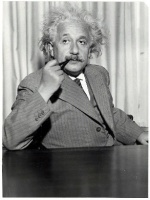 Albert Einstein -- Currently lecturing in America - 1933 Albert Einstein -- Currently lecturing in America - 1933
|
Aristocrats
- -- German Citizen - 1933 -- Character Prototype
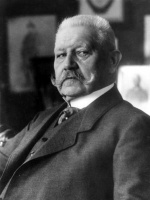 Paul von Hindenburg -- The second President of Germany from 1925–34 - 1933 Paul von Hindenburg -- The second President of Germany from 1925–34 - 1933
|
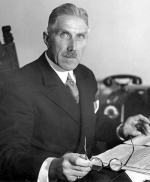 Franz von Papen -- He served as Chancellor of Germany in 1932 and as Vice-Chancellor under Adolf Hitler - 1933 Franz von Papen -- He served as Chancellor of Germany in 1932 and as Vice-Chancellor under Adolf Hitler - 1933
|
Civil Servants
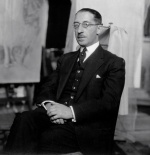 Bernhard Weiß -- Deputy Police Chief of Berlin - 1933 Bernhard Weiß -- Deputy Police Chief of Berlin - 1933
|
Communists
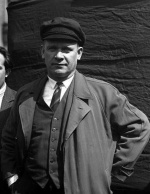 Ernst Thälmann -- Chairman of the KDP - 1933 Ernst Thälmann -- Chairman of the KDP - 1933
|
The Reichstag Fire Five
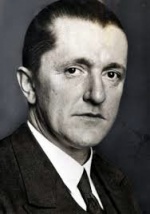 Ernst Torgler -- The last chairman of the Communist Party of Germany faction in the German Reichstag & future Nazi collaborator - 1933 Ernst Torgler -- The last chairman of the Communist Party of Germany faction in the German Reichstag & future Nazi collaborator - 1933
|
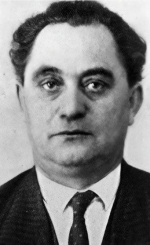 Georgi Dimitrov -- One of the three Bulgarian Comintern operatives arrested and tried for complicity in the Reichstag fire & future prime minister of Bulgaria - 1933 Georgi Dimitrov -- One of the three Bulgarian Comintern operatives arrested and tried for complicity in the Reichstag fire & future prime minister of Bulgaria - 1933
|
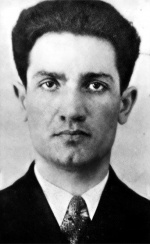 Blagoi Popov -- One of the three Bulgarian Comintern operatives arrested and tried for complicity in the Reichstag fire - 1933 Blagoi Popov -- One of the three Bulgarian Comintern operatives arrested and tried for complicity in the Reichstag fire - 1933
|
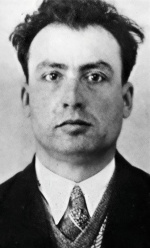 Vasil Tanev -- One of the three Bulgarian Comintern operatives arrested and tried for complicity in the Reichstag fire - 1933 Vasil Tanev -- One of the three Bulgarian Comintern operatives arrested and tried for complicity in the Reichstag fire - 1933
|
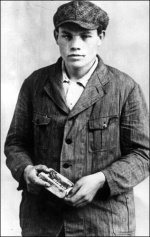 Marinus van der Lubbe -- A Dutch council communist tried, convicted and executed for setting fire to the German Reichstag building - 1933 Marinus van der Lubbe -- A Dutch council communist tried, convicted and executed for setting fire to the German Reichstag building - 1933
|
Entertainers
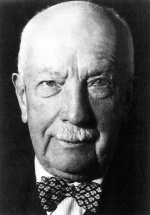 Richard Strauss -- - 1933 Richard Strauss -- - 1933
|
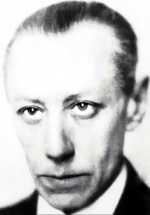 Max Schreck -- - 1933 Max Schreck -- - 1933
|
| 100px Brigitte Helm -- Star of Metropolis (1927) - 1933 |
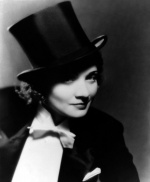 Marlene Dietrich -- - 1933 Marlene Dietrich -- - 1933
|
 Leni Riefenstahl -- - 1933 Leni Riefenstahl -- - 1933
|
| 150px Christopher Isherwood -- English Writer & Homosexual - 1933 |
| 150px Fritz Lang -- Film's "Master of Darkness" - 1933 |
The Third Reich
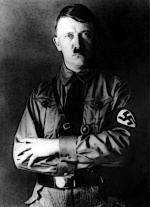 Adolf Hitler -- "Chancellor of Germany - 1933" Adolf Hitler -- "Chancellor of Germany - 1933"
|
 Eva Braun -- "Hitler's Mistress - 1933" Eva Braun -- "Hitler's Mistress - 1933"
|
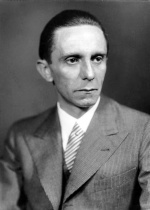 Joseph Goebbels -- "Reich Minister of Propaganda - 1933" Joseph Goebbels -- "Reich Minister of Propaganda - 1933"
|
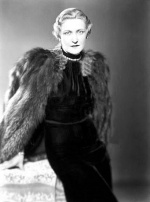 Magda Goebbels -- A prominent member of the Nazi Party and wife of Nazi Germany's Propaganda Minister Joseph Goebbels - 1933 Magda Goebbels -- A prominent member of the Nazi Party and wife of Nazi Germany's Propaganda Minister Joseph Goebbels - 1933
|
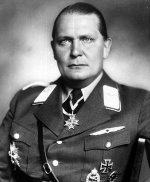 Hermann Goering -- "President of the Reichstag - 1933" Hermann Goering -- "President of the Reichstag - 1933"
|
 Emmy Sonnemann -- "Prominent actress at the National Theatre in Weimar - 1933" Emmy Sonnemann -- "Prominent actress at the National Theatre in Weimar - 1933"
|
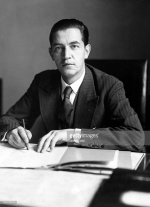 Rudolf Diels -- SS-Oberführer, Commander of the Gestapo and protégé of Hermann Göring - 1933 Rudolf Diels -- SS-Oberführer, Commander of the Gestapo and protégé of Hermann Göring - 1933
|
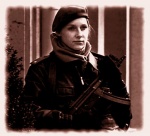 Katharina Herzog -- Preußische Geheimpolizei honeypot - 1933 Katharina Herzog -- Preußische Geheimpolizei honeypot - 1933
|
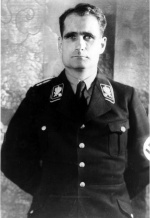 Rudolf Hess -- "Deputy Führer - 1933" Rudolf Hess -- "Deputy Führer - 1933"
|
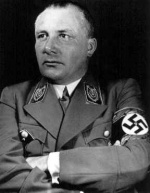 Martin Bormann -- "Personal Secretary to the Deputy Führer - 1933" Martin Bormann -- "Personal Secretary to the Deputy Führer - 1933"
|
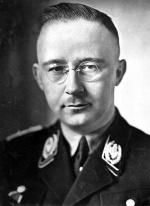 Heinrich Himmler -- "Reichsführer-SS - 1933" Heinrich Himmler -- "Reichsführer-SS - 1933"
|
 Benno Wruck -- Schutzstaffel Recruit & Runecaster - 1933 Benno Wruck -- Schutzstaffel Recruit & Runecaster - 1933
|
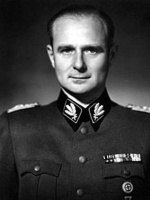 Karl Wolff -- "SS-Oberführer - 1933" Karl Wolff -- "SS-Oberführer - 1933"
|
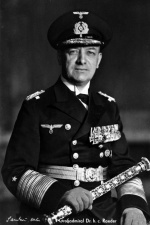 Erich Raeder -- Admiral and Commander-in-Chief of the Reichsmarine - 1933 Erich Raeder -- Admiral and Commander-in-Chief of the Reichsmarine - 1933
|
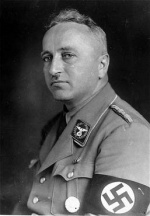 Robert Ley -- "Head of the German Labour Front - 1933" Robert Ley -- "Head of the German Labour Front - 1933"
|
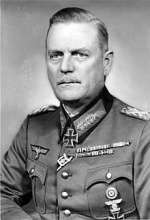 Wilhelm Keitel -- - 1933 Wilhelm Keitel -- - 1933
|
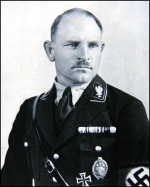 Josef Dietrich -- - 1933 Josef Dietrich -- - 1933
|
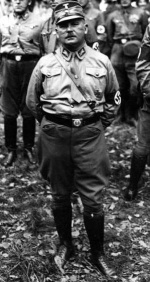 Ernst Röhm -- Head of the SA - 1933 Ernst Röhm -- Head of the SA - 1933
|
 Wilhelm Aust -- Ernst Röhm's latest lover & Protégé - 1933 Wilhelm Aust -- Ernst Röhm's latest lover & Protégé - 1933
|
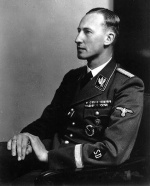 Reinhard Heydrich -- SS-Obergruppenführer und General der Polizei (Senior Group Leader and Chief of Police) - 1933 Reinhard Heydrich -- SS-Obergruppenführer und General der Polizei (Senior Group Leader and Chief of Police) - 1933
|
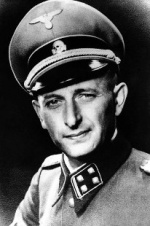 Adolf Eichmann -- - 1933 Adolf Eichmann -- - 1933
|
| 100px Richard Walther Darré -- - 1933 |
| 100px Erwin Rommel -- - 1933 |
| 100px Heinrich Müller -- - 1933 |
| 100px Franz Josef Huber -- - 1933 |
| 100px Josef Meisinger -- - 1933 |
| 100px Werner Best -- - 1933 |
| 100px Ernst Kaltenbrunner -- - 1933 |
| 100px [[]] -- - 1933 |
| 100px [[]] -- - 1933 |
| 100px [[]] -- - 1933 |
| 100px [[]] -- - 1933 |
| 100px [[]] -- - 1933 |
| 100px [[]] -- - 1933 |
| 100px [[]] -- - 1933 |
| 100px [[]] -- - 1933 |
| 100px [[]] -- - 1933 |
Others
| 150px Erich Ludendorff -- - 1933 |
| 150px August von Mackensen -- - 1933 |
| 150px Brigitte Helm -- - 1933 |
| 150px Josef Mengele -- Todesengel (Angel of Death) - 1933 |
| 150px [[]] -- - 1933 |
| 150px [[]] -- - 1933 |
| 150px [[]] -- - 1933 |
| 150px [[]] -- - 1933 |
| 150px [[]] -- - 1933 |
| 150px [[]] -- - 1933 |
| 150px [[]] -- - 1933 |
| 150px [[]] -- - 1933 |
| 150px [[]] -- - 1933 |
| 150px Pankratios -- - 1933 |
| 150px [[]] -- - 1933 |
| 150px [[]] -- - 1933 |
Fortifications
- -- Prinz-Albrecht-Straße 8 -- An address of dread, best known for having been the location of the headquarters of the Reich Main Security Office, SD, Gestapo and the SS in Nazi Germany.
- -- Sachsenhausen concentration camp -- ("Saxon's Houses", German pronunciation: [zaksənˈhaʊzən]) or Sachsenhausen-Oranienburg was a Nazi concentration camp in Oranienburg, Germany, used primarily for political prisoners from 1936 to the end of the Third Reich in May 1945.
- -- Spandau Prison -- Spandau Prison was located in the borough of Spandau in western Berlin. It was constructed in 1876 and demolished in 1987 after the death of its last prisoner, Rudolf Hess, to prevent it from becoming a neo-Nazi shrine. The site was later rebuilt as a shopping centre for the British forces stationed in Germany.
Galleries
- -- Alte Nationalgalerie -- The Old National Galler in Berlin is a gallery showing a collection of Neoclassical, Romantic, Biedermeier, Impressionist and early Modernist artwork, part of the Berlin National Gallery, which in turn is part of the Staatliche Museen zu Berlin. It is the original building of the National Gallery, whose holdings are now housed in several additional buildings. It is situated on Museum Island.
- -- Cassirer Galerie -- Impressionsists
- -- Galerie Flechtheim -- represented German artists, including George Grosz, but specialized in paintings by contemporary French painters.
- -- Galerie der Sturm --
- -- Galerie Van Diemen --
- -- Kunsthandel Kurt Bachstitz Gallery -- Dealer in Old Master paintings
German Intelligence
- -- Auswärtiges Amt -- The Federal Foreign Office, abbreviated AA, is the foreign ministry of the Federal Republic of Germany, a federal agency responsible for both the country's foreign politics and its relationship with the European Union. It is a cabinet-level ministry.
- -- Sicherheitsdienst -- Referred to in its full title as the "Sicherheitsdienst des Reichsführers-SS" (English: Security Service of the Reichsführer-SS), or SD, was the intelligence agency of the SS and the Nazi Party in Nazi Germany.
Holy Ground
- -- Berliner Dom -- is the short name for the Evangelical Supreme Parish and Collegiate Church (German: Oberpfarr- und Domkirche zu Berlin) in Berlin, Germany. It is located on Museum Island in the Mitte borough. The current building was finished in 1905 and is a main work of Historicist architecture of the "Kaiserzeit".
Cults
- -- Ahnenerbe --
- -- Artamanen-Gesellschaft -- The Artaman League was a German agrarian and völkisch movement dedicated to a Blood and soil-inspired ruralism. Active during the inter-war period, the League became closely linked to, and eventually absorbed by, the Nazi Party.
Hospitals
Hotels & Hostels
- -- Hotel Adlon -- The legendary original Hotel Adlon was one of the most famous hotels in Europe.
- -- Hotel Kaiserhof -- Hotel Kaiserhof was a luxury hotel in Wilhelmplatz, it was Berlin's first "grand hotel" and a popular hangout for prominent Nazis from the 1920s -1940s.
- -- Hotel Esplanade Berlin -- Hotel Esplanade once stood on Berlin’s busy transport and nightlife hub Potsdamer Platz. During its colourful and turbulent history it went from being one of the German capital’s most luxurious and celebrated hotels to a bombed-out ruin lost in the wastelands alongside the Berlin Wall.
- -- Hotel Excelsior -- Hotel Excelsior occupied number 112/113, Königgrätzer Straße (today’s Stresemannstrasse) on Askanischer Platz in the Berlin district of Kreuzberg. It was once one of the largest and most luxurious hotels in Europe but its destruction during World War II resigned it to the German capital's list of lost historical landmarks.
- -- Gasthaus neun Ferkel -- An inexpensive, but surprisingly comfortable 17th century inn, lost in the medieval streets of Altberlin. (Your character's place of residence)
Landmarks
- -- Reichstagsgebäude -- The Reichstag building is a historical edifice constructed to house the Imperial Diet (German: Reichstag), of the German Empire.
Law Enforcement
- -- Hilfspolizei -- The Hilfspolizei (abbreviated Hipo; literally: auxiliary police) was a short-lived auxiliary police force in Nazi Germany in 1933.
- -- Schutzpolizei -- Or Schupo for short, is a branch of the Landespolizei, the state (Land) level police of the German states. Schutzpolizei literally means security or protection police but is best translated as uniformed police.
- -- Ordnungspolizei -- The Ordnungspolizei, Order Police), abbreviated Orpo, were the uniformed police force in Nazi Germany between 1936 and 1945.
- -- Gestapo -- An abbreviation of Geheime Staatspolizei, or the Secret State Police, was the official secret police of Nazi Germany and German-occupied Europe.
- -- Kripo -- Kriminalpolizei (English: Criminal Police) is the standard term for the criminal investigation agency within the police forces of Germany, Austria and the German-speaking cantons of Switzerland.
Mass Media
Film
Newspapers
Radio
Television
Monuments
Museums
- -- Kaiser-Friedrich-Museum -- The museum was designed by architect Ernst von Ihne and completed in 1904. Originally called the Kaiser-Friedrich-Museum after Emperor Frederick III, the museum was renamed in honour of its first curator, Wilhelm von Bode, in 1956.
- -- Pergamon Museum -- The Pergamonmuseum is situated on the Museum Island in Berlin. The building was designed by Alfred Messel and Ludwig Hoffmann and was constructed over a period of twenty years, from 1910 to 1930. The Pergamon Museum houses monumental buildings such as the Pergamon Altar, the Ishtar Gate of Babylon, and the Market Gate of Miletus reconstructed from the ruins found in ancient Middle East and Turkey.
Paramilitary Groups
- -- Rotfrontkämpferbund -- The Roter Frontkämpferbund, "Alliance of Red Front-Fighters", abbreviated RFB, was officially a non-partisan and legally registered association, but in practice a paramilitary organization under the leadership of the Communist Party of Germany during the Weimar Republic (KPD).
- -- Sturmabteilung -- The Sturmabteilung (abbreviated to SA), literally Storm Detachment, functioned as the original paramilitary wing of the Nazi Party (NSDAP).
- -- Schutzstaffel -- or its abbreviated form SS; also stylized as Runic "ᛋᛋ" with Armanen runes; literally "Protection Squadron") was a major paramilitary organization under Adolf Hitler and the National Socialist German Workers' Party (NSDAP; Nazi Party) in Nazi Germany.
Parks
- -- Tiergarten -- The Tiergarten (formal German name: Großer Tiergarten) is Berlin’s most popular inner-city park, located completely in the district of the same name.
Political Parties
- -- NSDAP -- The National Socialist German Workers' Party (German: Nationalsozialistische Deutsche Arbeiterpartei, abbreviated NSDAP), commonly referred to in English as the Nazi Party, was a political party in Germany that was active between 1920 and 1945 and practised the ideology of Nazism. Its precursor, the German Workers' Party (Deutsche Arbeiterpartei; DAP), existed from 1919 to 1920.
- -- German National People's Party -- The German National People's Party (German: Deutschnationale Volkspartei, DNVP) was a national conservative party in Germany during the time of the Weimar Republic. Before the rise of the National Socialist German Workers' Party (NSDAP) it was the major conservative and nationalist party in Weimar Germany. It was an alliance of nationalists, reactionary monarchists, völkisch, and antisemitic elements, and supported by the Pan-German League.
- -- Communist Party of Germany -- The Communist Party of Germany (German: Kommunistische Partei Deutschlands, KPD) was a major political party in Germany between 1918 and 1933, and a minor party in West Germany in the postwar period until it was banned in 1956. In the 1920s it was called the "Spartacists", since it was formed from the Spartacus League.
- -- Socialist Workers' Party of Germany -- The Socialist Workers' Party of Germany (German: Sozialistische Arbeiterpartei Deutschlands, SAPD) was a centrist Marxist political party in Germany. It was formed by a left-wing party with around 20,000 members which split off from the SPD in the autumn of 1931. In 1931, the remnants of USPD merged into the party, and in 1932 some Communist Party dissenters joined the group too, as well as a part from the Communist Party Opposition. Nevertheless, its membership remained small. From 1933, the group's members worked illegally against National Socialism.
Private Residences
Restaurants
Ruins
Schools
Shopping
- -- Tietz Department Store --
- -- Kaufhaus des Westens --
Telecommunications
Theaters
- -- Charlottenburg Theatre --
Transportation
Cars of the 1920s
Cars of the Early 1930s
Die Erwachten: The Awakened of Germany
Die Untoten: The Kindred of Berlin
- -- Die Gesetze der Nacht -- The Traditions of Caine
Brujah
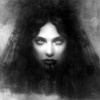 Isabella Correlli -- Dame der Nacht (Lady of the Night) Isabella Correlli -- Dame der Nacht (Lady of the Night)
|
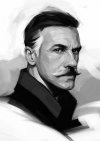 Tiedemann Frost -- Der schwarze Adler (The Black Eagle) Tiedemann Frost -- Der schwarze Adler (The Black Eagle)
|
 Dieter Kotlar -- Der Krieger (The Warrior) Dieter Kotlar -- Der Krieger (The Warrior)
|
Gangrel
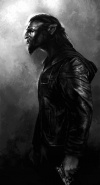 Ralf Keller -- ' Ralf Keller -- '
|
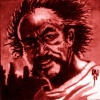 -- Daryl Lutz -- Das wilde Tier (The Feral One) -- Daryl Lutz -- Das wilde Tier (The Feral One)
|
Malkavian
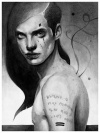 Ludwig Von Hohenzollern -- Die Hand der Gerechtigkeit (The Hand of Justice) Ludwig Von Hohenzollern -- Die Hand der Gerechtigkeit (The Hand of Justice)
|
Nosferatu
 Melitta Wallenberg -- Die verführerische Kanalratte Melitta Wallenberg -- Die verführerische Kanalratte
|
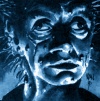 Ellison Humboldt -- Die Wahrheit in den Mauern Ellison Humboldt -- Die Wahrheit in den Mauern
|
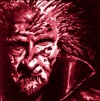 Ugly Rasputin -- Die unaufhaltsamen Wut Ugly Rasputin -- Die unaufhaltsamen Wut
|
 Amelia -- Die weinende Frau Amelia -- Die weinende Frau
|
Toreador
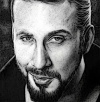 Jacques Barnabé -- Der Bildhauer (the scuptor) Jacques Barnabé -- Der Bildhauer (the scuptor)
|
Tremere
 -- Maxwell Ldescu -- Regent of Berlin -- Der Magus -- Maxwell Ldescu -- Regent of Berlin -- Der Magus (The Magus) | |
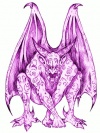 -- Gotthold -- Chantry Guardian & Elder Gargoyle of Berlin -- Gotthold -- Chantry Guardian & Elder Gargoyle of Berlin
|
 -- Falk -- Gargoyle bodyguard to Ldescu -- Falk -- Gargoyle bodyguard to Ldescu
|
Ventrue
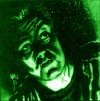 -- Gustav Breidenstein -- The Prince of Berlin -- Gustav Breidenstein -- The Prince of Berlin
|
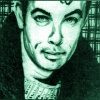 -- Wilhelm Waldburg -- The Eldest Son -- Wilhelm Waldburg -- The Eldest Son
|
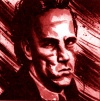 -- Peter Kleist -- The Second Son -- Peter Kleist -- The Second Son
|
 -- Katarina Kornfeld -- The Royal Daughter -- Katarina Kornfeld -- The Royal Daughter
|
Foreign Vampires in Berlin
 -- Corrie Tinbergen -- Princess Of Luxembourg
-- Corrie Tinbergen -- Princess Of Luxembourg
Das Reich der Toten: The Wraiths of Berlin
Berlin is city under Stygian control. Its Anacreon is no other than Otto von Bismarck, fettered by his fear for the fate of the nation he helped to create. Part of the Iron Legion, his regime is greatly appreciated by the local Wraiths. Under his leadership, the Necropolis of Berlin has become one of the most well-fortificated on the whole continent. Every Wraith that accepts his authority is granted regular access to Pardoners, protection of their Fetters, as well as consolation and counsel after being overtaken by their Shadow. In exchange, every wraith citizen is subject to compulsory military service, divided in corpses dedicated to one of the Legions. Each Legion, apart from the Legion of Fate, oversees one-seventh of city’s forces. Each military corps can elect on representative to act as a counselor to decision-making in the higher ranks. Civil issues are represented by neighborhood unions, who oversee civic disputes and bring issues before the military branches.
During the Night of Short Chains, the Grim Legion was unable to even marginally affect Bismarck’s rule. Any form of Guild representation is quickly destroyed and every Wraith that is caught in a public act of violence while not under control of their Shadow is sentenced to soulforging. Furthermore, the Necropolis is well defended by several animated Relics called the “Iron Champions”, formed from statues of General von Hindenburg that were erected during World War I and often destroyed in the riots following the defeat.
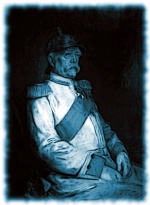 -- Otto von Bismarck -- Anacreon of Berlin
-- Otto von Bismarck -- Anacreon of Berlin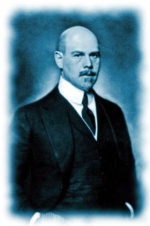 -- Walther Rathenau -- Former foreign minister of Germany - 1922
-- Walther Rathenau -- Former foreign minister of Germany - 1922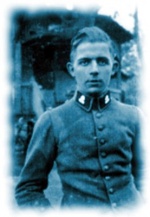 -- Horst Wessel -- A German Nazi Party (NSDAP) activist known for writing the lyrics to the "Horst-Wessel-Lied". His death in 1930 was used by the party for propaganda purposes.
-- Horst Wessel -- A German Nazi Party (NSDAP) activist known for writing the lyrics to the "Horst-Wessel-Lied". His death in 1930 was used by the party for propaganda purposes.- [[]] -- [[]] -- '
- [[]] -- [[]] -- '
- [[]] -- [[]] -- '
- [[]] -- [[]] -- '
Die Feen: The Changeling of Berlin
The Kithain maintain a Freehold near the Botanical Gardens. The Trod they guard has a calming power, making people more relaxed and reducing the risk of falling into a supernatural rage. The Changelings usually stick to their domain and expect the same from other supernaturals, so most avoid the area.
- -- Beata Penzig --
- -- Elfriede Markwardt --
Die Magier: Verbena vs Technocracy
Verbena of the Gray City
Iron Circle
Verbena rune-mages.
- [[]] -- Sigrun -- High Priestess of the Valkyries
- [[]] -- Maria Orsic -- Divinely inspired transcendental medium
The German Technocracy

They were initially founded as the Order of Reason in 1325, a group dedicated to the protection of humanity from the depredations of the supernatural — specifically Mages, and more specifically the Order of Hermes.
Euthanatos Visitors to Berlin
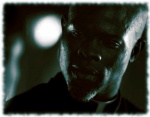 Senex -- Archmage of the Euthanatos - 1933
Senex -- Archmage of the Euthanatos - 1933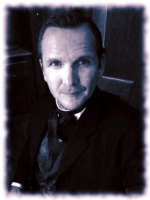 Alexander Gericault -- French Nephandus - 1933
Alexander Gericault -- French Nephandus - 1933
Berlin's Cult of Ecstacy
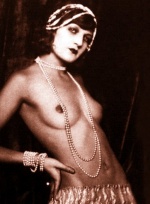 Anita Berber -- Berlin's Priestess of Debauchery - 1933
Anita Berber -- Berlin's Priestess of Debauchery - 1933
Berliner Sorcerous Societies
- -- Die Herren vom schwarzen Stein -- The Lords of the Black Stone
- -- Mitternachtswölfe -- Final remnant of the Daedalean Wolf Guild
- -- Societas Templi Marcioni -- The Inheritors of the Knights Templar
- -- Schattige Sonnengesellschaft -- Nazi Occult Society
- -- Thule Gesellschaft -- A cabal of German occultists originating in the 19th century, who now act as key players within the greater framework of the Third Reich.
- -- Vril Gesellschaft -- The All German Society for Metaphysics
Orphaned Hedge Wizards & Former Time Travelers
Fünf Schicksale: "Five travelers from the future returned to the past and altered the history of Germany at its most critical moment. But which five?"'
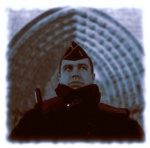 Emil Höfler -- W.W.II Historian / Armchair Tactician -- Currently a prisoner of the Preußische Geheimpolizei - 1933 Emil Höfler -- W.W.II Historian / Armchair Tactician -- Currently a prisoner of the Preußische Geheimpolizei - 1933
|
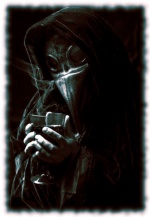 Der Plagenarzt -- The Plague Doctor - 1933 Der Plagenarzt -- The Plague Doctor - 1933
|
Die Werwölfe: The Get of Fenris
Sept of Grunewald
The Fenrir opposed to the Nazi Regime.
Swords of Heimdall
A camp of among the Get of Fenris who sympathized with the Third Reich.
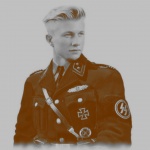 -- Ekkehard Krüger -- Geheime Staatspolizei (Gestapo) -- Kriminalassistent - Department E1
-- Ekkehard Krüger -- Geheime Staatspolizei (Gestapo) -- Kriminalassistent - Department E1
Die Vampire des Ostens: Kuei-jin
- -- Takuma Saito -- Watchtower of the East
Die Mumien: The Reborn of Egypt
Since the late 18th century, their have been rumors of strange supernatural beings of Egyptian origin within Berlin, never more than a whisper would be heard before the rumor vanished, only to crop up again decades later.
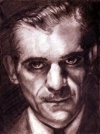 -- Inauhaten -- Mummy Architect and ally of the Manus Nigrum.
-- Inauhaten -- Mummy Architect and ally of the Manus Nigrum.
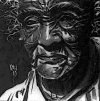 -- Saatet-ta -- The Darkener of the Earth
-- Saatet-ta -- The Darkener of the Earth
Die Chimäre: Schräger als Seltsam
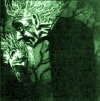 -- The Brothers Grimm -- Creatures of unknown origin who appeared around the time of death of the real Brothers Grimm, and now make trouble for the kindred of Berlin. Most speculation pins them as changelings or mages.
-- The Brothers Grimm -- Creatures of unknown origin who appeared around the time of death of the real Brothers Grimm, and now make trouble for the kindred of Berlin. Most speculation pins them as changelings or mages.
Hexenjäger: The Hunters Hunted
- -- The Inquisition -- Also known as, the Society of Leopold.
- -- Teutonic Order -- Also known as, the Order of Brothers of the German House of Saint Mary in Jerusalem is a Catholic religious order originally founded as a military order in the 12th century in Acre. Purely religious since 1929, it still confers limited honorary knighthoods.
Stories of the Gray City
- -- Machtergreifung -- Our story set in February of 1933
Websites
http://en.wikipedia.org/wiki/Berlin
http://all-that-is-interesting.com/berlin-in-the-1930s
https://www.youtube.com/watch?v=AnpTWKKWQ1o (Hitler Speaks)
http://www.dailymail.co.uk/news/article-2240351/Sunshine-swastikas-Rare-colour-pictures-1930s-Berlin-carefree-life-Hitler-s-capital-war-reduced-rubble.html (Sunshine and Swastikas)
http://www.shockblast.net/pictures-of-berlin-in-the-1930s/
https://en.wikipedia.org/wiki/List_of_sights_in_Berlin
